The Fake Reconquista: Why A Majority of Mexicans Think The US Southwest Belongs to Mexico
Executive Summary
- Mexicans have aggressively increased their population primarily through illegal immigration.
- What most Americans don’t know is that most Mexicans think the US Southwest belongs to Mexico.
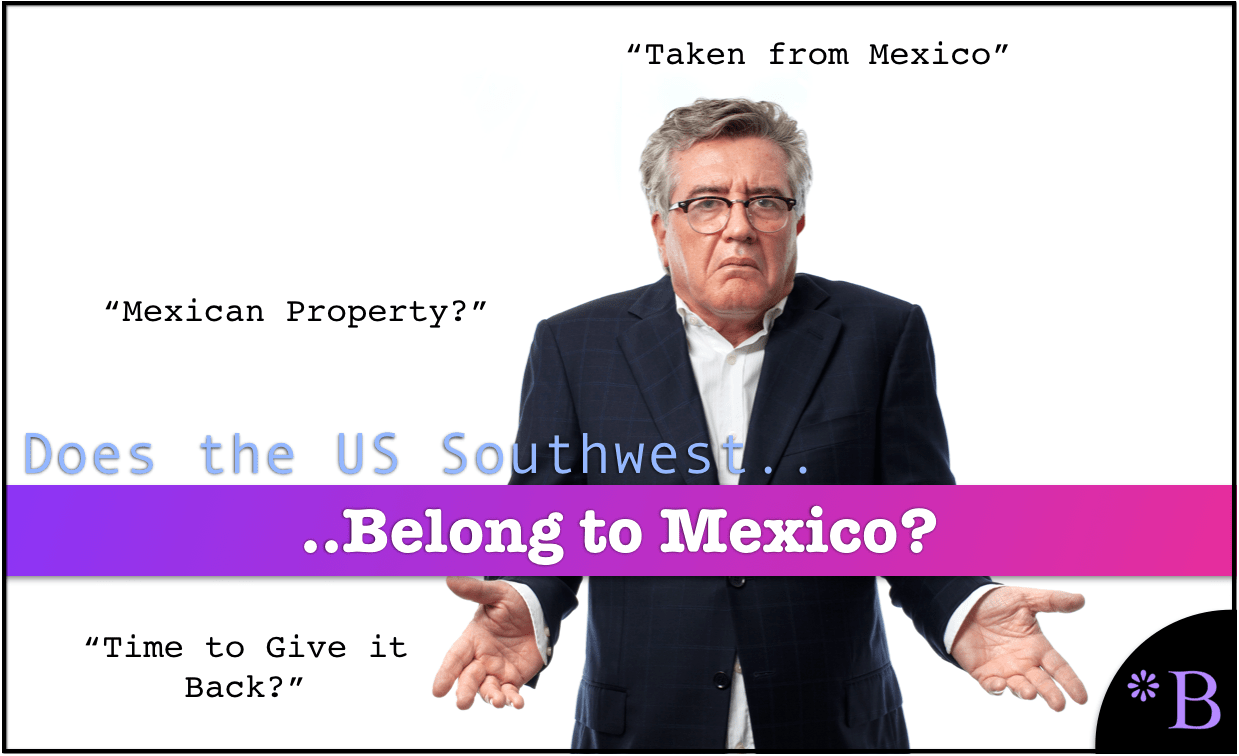
Introduction
The Mexican Reconquista is a movement that claims roughly 1/3 of the US has historically belonged to Mexico and that Mexicans intend to recapture this area through uncontrolled population growth. The entire idea of the Reconquista is based upon some very weak logic and historical understanding. However, the majority of Mexicans in the US believe it and support it. In this article, the US Reconquista will be reviewed by doing something that Reconquista advocates never do and appear incapable of doing: researching its claims and connecting them to historical facts.
Our References for This Article
If at any time you want to see our references for this article and also other Brightwork articles on Mexico, see this link.
Considering the Claim of Reconquista
If one lives in the US and is not Mexican, one has probably heard at one time or other quotes like the following:
“We did not cross the border, the border landed on us..”
or
“The US belonged to Mexico anyway..”
Yet, this not only does not make sense, but it is also highly incendiary. And what is little known is that this is a territorial claim Mexico was never ever supporting to support with the Mexican military.
Secondly, it usually is not understood by non-Mexican Americans how serious Mexicans are about these claims.
In this regard, the following quotation is explanatory.
Now some prominent Mexicans are raising their own quibbles about the border. They are making the case that Mexico should return to its 1848 boundaries, before the United States snatched large chunks of their territory, including most of California, Utah, Nevada, New Mexico, and Arizona, during the Mexican-American war.
“We are going to make a strong and tough case, because we are right. They were in Mexican territory in a military invasion,” Guillermo Hamdan Castro, a lawyer working with Cárdenas on the case, told reporters in March.
The gambit hinges on a line in the first sentence of the Treaty of Guadalupe Hidalgo, the document that sealed the U.S. victory over Mexico on Feb. 2, 1848 at the end of the Mexican-American war. The sentence includes an admission the U.S. army invaded Mexico, and Hamdan argues that signing an agreement under such duress renders it null, and therefore Mexican immigrants can’t be expelled from border territories.
Being “under duress” describes the situation of every country that has lost a war and was forced to the negotiation table. Therefore, using the term or condition to invalidate the Hildago treaty is very curious.
Such a suit from the Mexican government would need to be approved by Mexican President Enrique Peña Nieto, by no means a certainty. Then, it would likely face slim odds of succeeding in the courts. Legal claims using modern conceptions of law are on shaky ground applied to a treaty more than 150 years old. And the United States does not recognize the International Court of Justice’s jurisdiction to enforce its decisions in contentious cases.
But there are worries the suit could exacerbate already resurgent Mexican nationalism, endangering two decades of relative stability between the two nations. “I have concerns that this type of a case could really stoke a nationalistic defensive response from both sides of the border,” Christopher Wilson, a Mexico expert at the Wilson Center, warned.
US Southwest Causes Poverty….in Mexico?
This movement also makes claims that the control over what is now the US Southwest has caused poverty and emigration.
We reject the occupation of our nation in its northern territories, an important cause of poverty and emigration. We demand that our claim to all the territories occupied by force by the United States be recognized in our Constitution, and we will bravely defend, according to the principle of self-determination to all peoples, the right of the Mexican people to live in the whole of our territory within its historical borders, as they existed and were recognized at the moment of our independence.
It is unclear what US ownership of US Southwest states has to do with poverty in Mexico. Did the ownership of these lands since the mid-1850s stop Mexico from developing its economy?
Curiously, the movement claims that lands have been illegally stolen and also that it has caused poverty in Mexico.
The long history of oppression and subordination has to end” and that on both sides of the US–Mexico border “there is a growing fusion, a reviving of connections … Southwest Chicanos and Norteno Mexicanos are becoming one people again.”[9] Truxillo stated that Hispanics who have achieved positions of power or otherwise are “enjoying the benefits of assimilation” are most likely to oppose a new nation, explaining that..
Truxillo believed that the República del Norte would be brought into existence by “any means necessary” but that it was unlikely to be formed by civil war but rather by the electoral pressure of the future majority Hispanic population in the region.[9][10] Truxillo added that he believed it’s his job to help develop a “cadre of intellectuals” to think about how this new state can become a reality.
As we will cover, this is not possible because the northern Mexican territories contained extremely few Mexicans — this creates an illusion of Mexican continuity, which was never true.
Furthermore, the term “intellectual” is a bit contradictory here; as we will later show, there is not very much intellectual about the claims of the “Reconquista” movement.
Then, the quote goes on to declare that the US, a country with a population of 330 million (which is roughly two times as large as its carrying capacity), needs to be populated with more Mexicans.
It is not our fault that whites don’t make babies, and blacks are not growing in sufficient numbers, and there’s no other groups with such a goal to put their homeland back together again. We do. Those numbers will make it possible. I believe that in the next few years, we will see an irredentists movement, beyond assimilation, beyond integration, beyond separatism, to putting Mexico back together as one. That’s irridentism [sic]. One Mexico, one nation.[12]
We have an aging white America. They are not making babies. They are dying. It’s a matter of time. The explosion is in our population.”[8] In a subsequent interview with The Washington Times in 2006, Gutiérrez backtracked and said there was “no viable” Reconquista movement, and blamed interest in the issue on closed-border groups and “right-wing blogs”.
This seems to say that if a sufficient number of Mexicans live in an area of the US, that area needs to revert to Mexico. There is no legal basis for this, and this is the first group that I am aware of to claim in the US that a country should become the territory of a different country due to immigration.
Secondly, it seems to give non-Mexican Americans an understanding of why it is not a good idea to allow so many Mexicans into the country. There is a clear statement here that Mexicans view their continual illegal immigration and population growth as a type of invasion of the country.
Something little-known and little-publicized is that most Mexicans agree that the US Southwest belongs to Mexico, as explained by the following quotation.
A May 2006 Zogby poll reported that 58 percent of Mexicans believe that the southwestern US belongs to Mexico. – Wikipedia
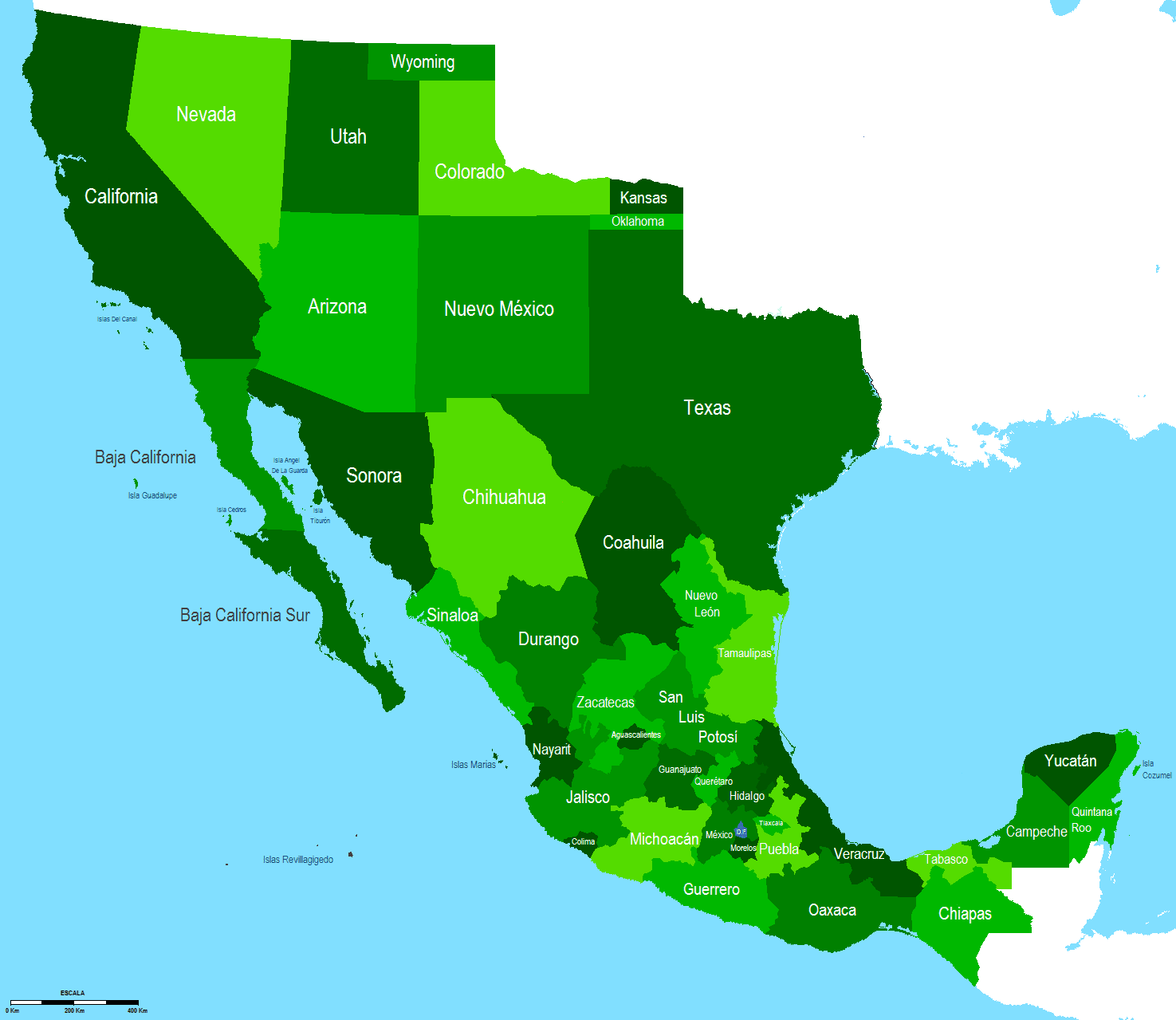
This is what the Reconquista Movement Mexicans claim as Mexico. Mexico has large amounts of largely undeveloped land north of Mexico City to the US border — however, Mexicans only have an interest in moving to white-developed US states rather than developing these very lightly populated areas within Mexico. The desire to settle in the US states designated as part of the Reconquista only occurred after we had developed it.
The Claims of the Reconquista Movement
During the recent anti-Trump riots in San Jose, an angry-looking Latino held up a hand-lettered sign that said, “Trump, this is Mexico! You are not welcome on Native Mexican soil.
The riots were part of what some Latinos call the “Reconquista.” It harks back to the fifteenth century, when the Spanish reclaimed the Iberian peninsula from the Moors. As I shall show, however, California is not native Mexican soil.
The California Reconquista is fueled by false information in the history books. They read as if American forces invaded California when it was ruled by Mexico. In fact, Mexico’s governance of California had ended one and a half years earlier, and Mexican rule had been brief. Here is the true story.
In 1842, Mexico tried to sell the ungovernable California to the king of Prussia. His ambassadors in London and Washington urged purchase, but the king declined the offer on the advice of a famous explorer, Alexander von Humboldt.
In 1846, after the Mexican-American War broke out, the U.S. Navy arrived in Monterey on July 1 and hoisted the American flag. It was a timely arrival. A British fleet showed up on July 16 – too late. The British had planned to seize California as a means of collecting Mexican debts.
In sum, Mexican rule was brief, much interrupted, and unwelcome. California was destined to become British or American. It was not native Mexican soil. – American Thinker
Conquering Land is a Legitimate Way to Obtain Land…if Done by Mexico, but Not by the US?
What is curious about the term Reconquista or Reconquest in English is that Mexico will reconquer the US Southwest. However, the central logic of the movement is that the ownership of the states of the Southwest is not valid because those lands were conquered from Mexico by the US. But if it is illegitimate for the US to conquer the land, then why would it be legitimate for Mexico to reconquer it? It does not make any sense, as it states that it plans to gain territory through conquering while at the same time declaring that conquered land is illegitimate.
Mexico Was in Control of Its Northern Territorial Claim?
Those Mexicans who propose Mexico could back up its claims for the entirety of what is now the US Southwest would be surprised by the actual state of Mexican control of this area.
The U.S. Army under Major General Winfield Scott eventually captured Mexico City through stiff resistance, having marched west from the port of Veracruz on the Gulf Coast, – Wikipedia
The Mexican-American War did not only result in fighting, which stopped at the border, but instead, the US could have taken Mexico’s capital city. They had taken the city and could have kept it, but they returned it and all of the lands they had taken up to the current border with Mexico.
This was, in a way, illogical because, as you will see as you read more, Mexico was not in control of even territory quite close to Mexico City.
The Hildago Treaty Was Unfairly Struck
Mexicans complain about the signing of the Hildago Treaty. Still, they neglect to mention that Mexico, in addition to receiving its capital city back and the lands south of the US border. Mexico also received debt forgiveness at $15 million (which was much more money at that time, as it sounds paltry today).
The illogical nature of the Reconquista Movement is also described in this video.
Mexico’s Claim or Spain’s Claim?
Mexicans who dispute the US ownership of the Southwest states seem to confuse the matter of Mexico’s independence from Spain.
Mexico did not obtain independence from Spain until 1821, just 25 years before the Mexican-American War. This means that modern-day Mexicans support Spain’s claim, not Mexico. This is a claim made over what were unconquered Indian lands. Why it is considered “woke” and culturally sensitive to show deference to this claim is unclear.
Secondly, Spain was a white colonial entity — so why is a Spanish claim, which Mexico inherited this claim from Spain, that it could not back up militarily considered the final word on the providence of the current US Southwest states?
Thirdly, Spain/Mexico’s control over what is now the US Southwest was non-existent. They had little ability to administer the area of land. And as Mexicans might recognize, Spain “claimed” all of Mexico; however, Mexico used violent means to obtain their “independence.”
This raises the question of how much claims that cannot be supported should be respected. Because after Spain lost control of Mexico, it did not respect Mexican independence and “wanted its territory back.” However, this claim does not seem to receive tears from Mexicans.
This is explained in the following quotation.
Mexico obtained independence from Spain and the Spanish Empire with the Treaty of Córdoba in 1821. It briefly experimented with monarchy, but became a republic in 1824. This government was characterized by instability, leaving it ill-prepared for international conflict when war broke out only two decades later, in 1846.[12]
Even without the Mexican-American War, territories of Mexico were in open rebellion against the Mexican government then. The Spanish/Mexicans had a tiny population in the disputed territories, and in the Texas Territory, they invited US citizens into the territory to help them fight Indians.
The entire country of Mexico was based on conquest by Spain over the Mexican territory, which only became Mexico because Napoleon invaded Spain, breaking Spain’s grip on Mexico.
Furthermore, the Aztecs were themselves conquerors (of an area smaller, roughly 1/2 of current-day Mexico). That is how the Aztecs obtained their territory through conquest.
Was Mexico Able to Even Defend Texas…..From Indians?
The following quotation describes the level of control that Mexico had over Texas.
The civilian population of northern Mexico offered little resistance to the American invasion, possibly because the country had already been devastated by Comanche and Apache Indian raids. Josiah Gregg, who was with the American army in northern Mexico, said that “the whole country from New Mexico to the borders of Durango is almost entirely depopulated. The haciendas and ranchos have been mostly abandoned, and the people chiefly confined to the towns and cities.”
In the decades preceding the war, Native American raids in Mexico’s sparsely settled north prompted the Mexican government to sponsor migration from the United States to the Mexican province of Texas to create a buffer. – Wikipedia
The Reconquista Movement claims 100% ownership undisputed ownership of the modern-day US Southwest; however, they appear to forget that American Indians were spread throughout this region.
The US eventually defeated all of the American Indian tribes. The Mexicans did not. This brings up the question of how much control Mexico had over the US Southwest as they mostly lost against the American Indian tribes like the Comanche and Apache.
Can a Territory Be Said to be “Under One’s Control” That is Being Constantly Raided by Indian Tribes?
Can one imagine the US being able to carve the US Southwest into functioning states, invest in infrastructure, etc., if they were unable to stop constant raiding parties by the American Indians? How would the US have developed the Southwestern states if they had never been able to halt Indian raiding? This seems like an essential requirement to claim a territory.
Surely, the US would not have its claims taken seriously and would have been able to modernize the US states.
However, Mexican Reconquista Movement proponents have no problem making the claims of ownership of the modern US Southwest, without ever mentioning the American Indians.

Do the Comanche fit into the narrative of Reconquista Movement proponents? Various Indian tribes don’t seem to have agreed that the territory claimed by Spain and then Mexico was Mexico’s property. How do Mexicans reconcile this? How could they ever claim to have controlled or “owned” a territory that they never defeated the people living in the areas they claimed?
If Mexico controlled the northern territories, why did the US have to fight and defeat the Comanche Apache and a host of other Indian tribes on the Southwest? Who was native to the northern territories?
- The Indians were, the Spanish were not.
- Neither were the Indians of modern-day Mexico. There were many different Indians in Mexico, but they were not indigenous to the northern territories.
The following describes the problems Mexico had with Indian tribes.
The Comanche and Apache were successful in raiding for livestock and looting much of northern Mexico outside the scattered cities. Northern Mexico was a violent and chaotic area due to the Indian raids.
The raids after 1821 resulted in the death of thousands of Mexicans, halted most transportation and communications, and decimated the ranching industry that was a mainstay of the northern economy. As a result, the demoralized civilian population of northern Mexico put up little resistance to the invading U.S. army. – Wikipedia
Mexicans were being killed by the thousands by Comanches and other Indian tribes, meaning Mexican civilians were not going to resist the US Army.
This means the Mexican civilians would prefer the US Army because when it comes down to getting scalped or skewered versus being protected from Indians, let us say the Mexican flag is going to end up on the ground. As we will see later, Mexicans in Mexico did not resist the US Army even 80 miles from Mexico City. So this pattern repeats itself even very close to what was the seat of the Mexican government’s power.
Still, Reconquista Movement proponents have the unmitigated gall to state that Mexico was in control of the New Mexican and Texas territories! Even the small number of Mexicans living in the disputed territory would not seem to agree with modern-day Reconquista proponents. You will see later that the claimed territory of Alta, California, was even less controlled by Mexico.
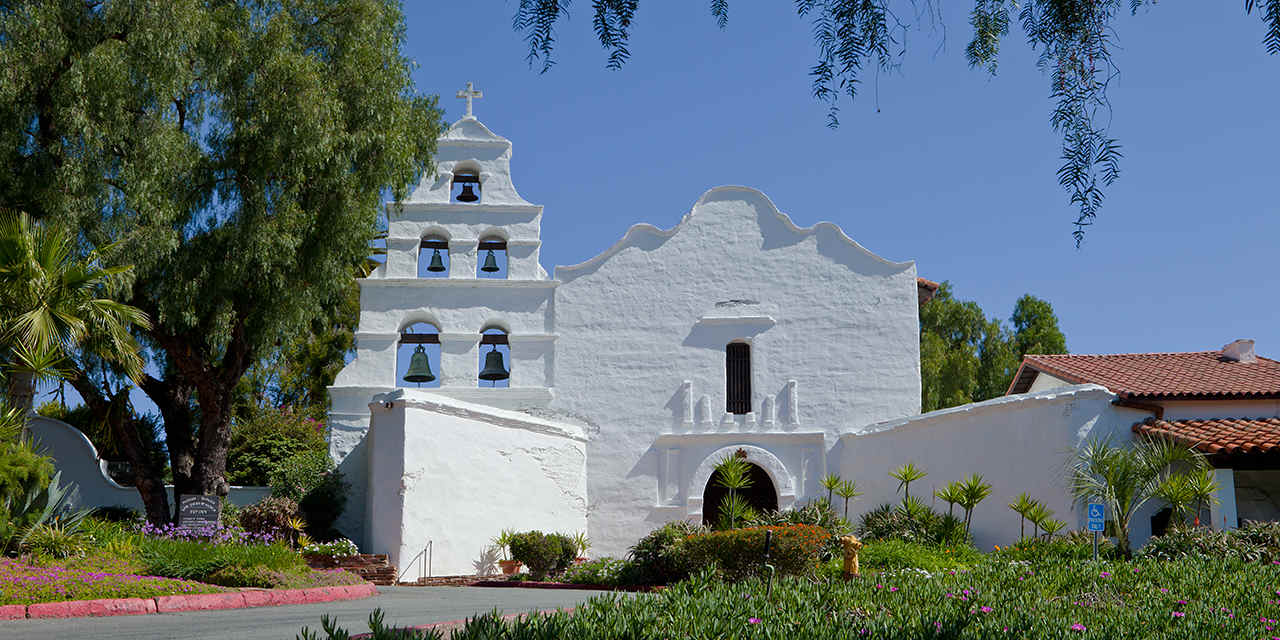
If Spain/Mexico had such firm control over the disputed territory, why is it so difficult to find anything leftover from Spain/Mexico besides missions?

This is the city of Los Angeles. It is hard to miss and is based on European laws and technology. Los Angeles is just one of many cities in the US Southwest that show clear evidence of significant investment on the part of the US society. Over 170 years of investment. But according to a high percentage of Mexicans, all of it belongs to them. And through a demographic war, they will push the people that created what the Southwest out and take control over it.
The Reality of the Missions
The reality of the missions is quite different from their commonly presented whitewashed, idealized view. And this plays further into how little claim Mexico had over areas where Spanish missions existed.
How Missions Lead to Depopulating the Native Populations
Scientists say that upon the arrival of the Spanish missionaries in 1541, approximately 5,000 to 8,000 natives lived in Jemez. Through examination of plants within the village, scientists were able to determine the age gap of plant life to better understand the loss of human interaction with vegetation. By 1680, scientists concluded that the Jemez village was populated by approximately 850 natives. This 87% decrease in population size illustrates the tragic effects of diseases of the time, combined with the introduction of a new culture influenced by the Spanish missionaries. The Tepehuan associated the rise in death directly with these missionaries and their reductions, which spread disease and facilitated exploitative labor to encomanderos and miners. – Wikipedia
The Role of Education In Conversion
The missionaries began educating the native youth by separating the children from their families and placing them in Christian-based schooling systems.
Franciscan missionaries were the first to arrive in New Spain, in 1523, following the Cortes expeditions in Mexico, and soon after began establishing missions across the continents.[22][23] The Franciscan missionaries were split evenly and sent to Mexico, Tezcoco, Tlaxcala, and Tezcoco.[24]:138 In addition to their primary goal of spreading Christianity, the missionaries studied the native languages, taught children to read and write, and taught adults trades such as carpentry and ceramics.
To figure out when the Jemez villages were abandoned, Liebmann and his colleagues counted the rings of trees now growing on the landscape. When (the mass deaths on the part of the indigenous population) That’s about 100 years after the first contact with Europeans, but it coincides with the establishment of Catholic missions, the first permanent European settlements in the region. That suggests the area’s colonization triggered the depopulation, says Nevle, not something that happened before, such as occasional contact with Spanish explorers. The exact details remain unclear, but perhaps “it was something about bringing so many people together in the mission system that provided the critical mass for diseases to move across the population,” Nevle says. – ScienceMag
And the following quotation.
The California missions began in the late 18th century as an effort to convert Native Americans to Catholicism and expand European territory. There were 21 missions in all, lasting from 1769 until about 1833.
Although Spain claimed California as its territory in 1542, Spaniards didn’t try to occupy the land until the late 1700s
Franciscan priest Father Junipero Serra founded the first mission in 1769. This was known as Mission San Diego de Alcalá and was located in present-day San Diego.
The native Indians who occupied the region were initially resistant to the mission. In 1775, hundreds of local Tipai-Ipai Indians attacked and burned the San Diego Mission, killing three men, including Father Luis Jayme. The missionaries rebuilt the mission as an army fort.
By 1821, Mexico won its independence from Spain. For several years, there was debate about what to do with the mission system.
In 1833, the Mexican government passed a law that secularized and ended missions. California was part of Mexico during this time.
Some of the mission land and buildings were turned over to the Mexican government. While much of the property was intended to be given back to the natives, private owners ended up with the majority of land.
Prior to the California missions, there were about 300,000 Native Californians. By 1834, scholars believe there were only about 20,000 remaining. – History
After independence from Spain, Mexico’s overall competence and “ability to get things done” declined. They were in complete disarray for many years, as is explained in the following quotation.
In 1846 alone, the presidency changed hands four times, the war ministry six times, and the finance ministry sixteen times. – Wikipedia
This further eroded the ability to support Spanish claims, as explained in the following quotation.
During the Spanish colonial era, the Californias (i.e., the Baja California peninsula and Alta California) were sparsely settled.
After Mexico became independent, it shut down the missions and reduced its military presence. – Wikipedia

*Modern-day California and Nevada (roughly speaking) were known then as Alta (higher) California. (It is shown on this map as “Alto,” but most references call it “Alta.”)
This means that even the limited missions, the point just made, were closed.
Where Was the Effort or Ability to Support Mexico’s Northern Territorial Claims?
If Mexico was as serious about its territorial claims then as the Reconquista Movement is today, why did it put so little effort into supporting them? It should be little surprise to most Mexicans that the Mexican government is not very good at doing things, which is one reason most Mexicans seem to prefer living in a white European-based society.
Why Mexicans would presume that the Mexican government was cut off from its far more competent European sponsor (Spain) back in the 1850s than it is today is a curiosity.
The question might be phrased as follows.
“Do you recall how you don’t want to live in Mexico becuase the government is horrible and can’t get things done?
Ok, not thinking of that context, why would you think that Mexico could not enforce its claims over the Mexican “territories.”
Being from Mexico, you should probably have seen this coming.
Alta California
Reconquista Movement Mexicans never pointed out that Alta California’s population did not want to be part of Mexico.
A significant number of influential Californios were in favor of annexation, either by the United States or by the United Kingdom. Pío de Jesús Pico IV, the last governor of Alta California, was in favor of British annexation. – Wikipedia
And this makes sense- given the choice of who would willingly want to be part of California.
The worst thing that happened to Mexicans was the US not only conquering all of Mexico and releasing them from the yoke of the Spanish/Mexican nobility. This point seems to be lost on Mexicans — that the Mexican government had a very low buy-in from its citizens and that the US, not only conquering all of Mexico, vastly worsened the condition for Mexicans. After the US Army left, the Mexican nobility returned to its previous pattern of abusing the lower-class Mexicans.
Then we have given Mexicans who have come to the US much more than Mexico ever gave them — why would Mexicans have an allegiance to the country they had to flee? Do Mexicans want the US Southwest to be administered like Mexico is administered? To be administered federally from Mexico City?
If Mexicans in the US want to be administered and governed by Mexico, there is no need to wait. They, both legal and illegal, can return to Mexico. It seems odd that Mexicans living in a European-based system that broke the country’s laws to live there would support bizarre Reconquista claims.
The following quotation is instructive in this regard.
Comment
Many 2nd, 3rd, and 4th generation Americans of Mexican descent have a romanticized view of how wonderful life would be if the Southwest of the United States was to become a part of Mexico. They believe in the mythology of Aztlan. They don’t realize that the Aztecs and the Mayans were brutal to non-members of their tribe. They haven’t lived in Mexico to understand that there still exists a caste system and the leaders of the major political parties, descendants of the conquerors of the brutal Aztec and Mayan civilizations, have deep European roots. These leaders have no reason to change the status quo. That’s why the wealthy are so wealthy and the poor remain so poor. The 2nd, 3rd, and 4th generation Americans of Mexican descent believe that life would continue the way it is now, and even improve, under Mexican rule or if they were to install a new socialist government. They haven’t lived in Cuba or Venezuela for an extended period of time. These Americans also haven’t seen the utter cruelty and depravity of the Mexican cartels. I hope they never do. They don’t realize that life has been so good in the United States only because of the founding documents, the Declaration of Independence, the Bill of Rights and the Constitution.
As pointed out, Mexicans who supported the Reconquista appear entirely oblivious to the fact that Mexico has a horrible history of governance.
Why would Mexico, given this history, be able to administer the US Southwest in a way comparable to the competence of the US?
The degree to which a third-world nation was dependent upon European-based systems and people for their standard of living but did not realize it was demonstrated in Venezuela.
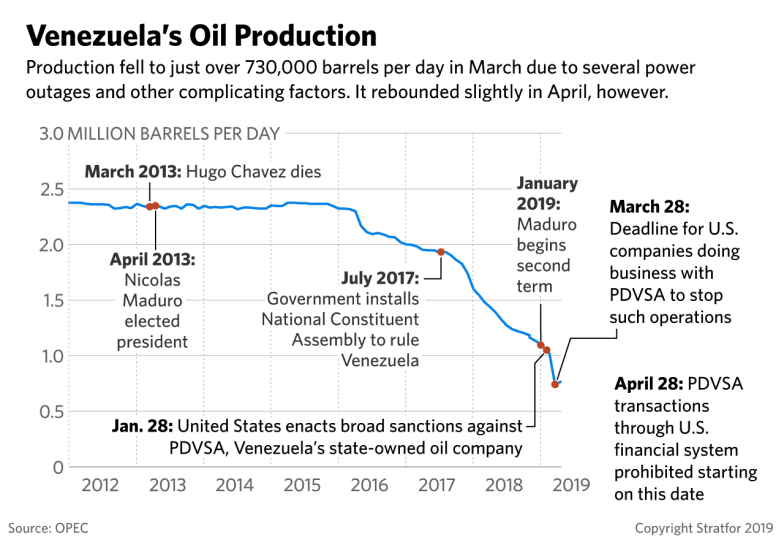
While, as with other oil producers, Venezuela’s oil infrastructure was entirely based upon European technologies and engineering, as Venezuela moved to take more control over its oil production, it has seen its oil production decline sharply.
While this has occurred, employment in the Venezuela state-owned oil company has tripled. Notice that the decline began far before the application of US sanctions.
Observe the mismanagement of the oil-producing infrastructure in Venezuela. The decline is quite clear after reviewing this video, and Venezuela has thoroughly polluted areas around its oil infrastructure.
Why Did the US Bother Fighting Mexico Over Territories For Which They Had No Real Claim?
At this point, we have established that Mexico never conquered and could not even defend the northern territory of Mexican settlers from Indian attacks. This raises a historical question that I have never heard asked but seems obvious.
Why did the US bother invading Mexico to obtain the Treaty of Hildago?
The US defeated Santa Anna at San Jacinto in a battle that lasted 18 minutes. The treaty signed by Santa Anna meant that Mexican troops would leave the area of Texas, meaning Texas would be independent.

Santa Anna made a lot of grand proclamations, and reading his correspondence displays an enormous ego. However, while effective at convincing others of his prowess, this ego was not backed up by his performance. Before fighting the US, Santa Anna went around pacifying various Indian tribes in Mexico, which is not very good training for fighting a modern army as the US possessed at the time. Santa Anna lost every battle he fought against US forces. The Alamo was not a US military operation but rather a group of Americans who had requested US military support and were denied that support and were defeated by Santa Anna’s army. Santa Anna habitually made military claims he could not support and thought little of sacrificing his troops for his glory. Santa Anna’s army was a peasant army with no particular interest in fighting for “Mexico.” The behavior of all of the Mexican generals in the Mexican-American War is consistent with nearly all of Mexican history, which has been the Spanish-blooded elites looking down their noses at Indian peasants while managing a barely integrated coy try with extreme incompetence and indifference. These individuals may have been minor nobility in Spain, but they gave themselves a “promotion” once in Mexico.
Could Mexico Have Defended Any Claimed Northern Territory from the US Military?
It is highly unlikely that they could have. Mexico would have been able to defend the New Mexico or Alta California territories as they had just been easily defeated in the most contested territory of Texas. Due to this, the US could have taken the territories at its convenience. The purpose of a full invasion of Mexico and making the capital of Mexico capitulate was to obtain a treaty from Mexico to recognize the transfer of the northern territories. However, this war was based upon what appears to be a faulty assumption by President Polk and his advisors — the assumption that Mexico ever possessed the northern territories. The evidence for stating the assumption is false is that Mexico never even tried to defeat the inhabitants of the northern territory. Therefore, the territory was possessed by the American Indians.
The US could have fought the Indians for the northern territory (as it ended up doing in any case) and ignored the Mexican claims for the territories, and there is nothing Mexico could have done about it. If the US was not going to take over Mexico, it was an unnecessary expenditure of effort, finances, and US human lives, including the lives of Mexican peasants, to attack the country.
All that would have been needed is to pick a place to create a border (probably below the current border, where the landmass is more narrow and more easily defended) and declare the border the official US/Mexico border. At that time, the northern region of modern-day Mexico was very sparsely populated. Another option would have been to continually offer some compensation to Mexico to sign over the land once they saw that they were going to “lose” it one way or another.
Did All of Mexico Support Mexico in the Mexican American War? (“37% of Your State’s Participating Ain’t Bad?”)
Who “was Mexico” in 1846? Notice the following quotation.
On the Mexican side, only 7 of the 19 states that formed the Mexican federation sent soldiers, armament, and money for the war effort, as the young Republic had not yet developed a sense of a unifying, national identity. – Wikipedia
Mexico believed so strongly in its/Spain’s claim in the northern territories (where very few Mexicans lived, by the way) that 7/19 or 37% of Mexico sent support for the effort.
And it was not just a matter of hesitation in sending resources; the Yucatan peninsula, which felt little representation or affiliation with the Mexican government, defected from the Mexican union several times after Spanish independence. Yucatan had asked the US to intervene in their dispute with the Mexican federal government during something called the Caste War when the Mayan people rebelled against the white Spanish nobility. General Santa Anna had to invade Yucatan in 1842 to pacify the area. This was an armed conflict that went off and on from 1850 until 1933.
Another Mexican state, Chiapas, has an independence movement to this day and has a horrible relationship with the Mexican federal government.
Today, large areas of Mexico are occupied by the military, and like Egypt, one questions how much Mexico would continue to be one country without this constant internal “occupation.” Mexico has numerous states that would prefer not to be part of Mexico, so Mexico has a long-term pattern of pretending to have the buy-in of regions that it does not. If Mexico is against using force to control territory, it should let these states become independent.
The Mexican Soldiers Believed in the Cause?
Proponents of the Reconquista leave out entirely the actual degree of support for fighting the US Army or that the typical Mexican soldier was not even interested in being in the Mexican military at all. This is explained in the following quotation.
Santa Anna said “the leaders of the army did their best to train the rough men who volunteered, but they could do little to inspire them with patriotism for the glorious country they were honored to serve.” – Wikipedia
Yes, isn’t that odd? That does not seem to fit into the unified vision of Reconquista proponents.
Well, let us find out more about the typical Mexican soldier.
Desertion was a major problem for the Mexican Army, depleting forces on the eve of battle. Most soldiers were peasants who had a loyalty to their village and family, but not to the generals who had conscripted them.
Often hungry and ill, underequipped, only partially trained, and never well paid, the soldiers were held in contempt by their officers and had little reason to fight the Americans.
Looking for their opportunity, many slipped away from camp to find their way back to their home village. – Wikipedia
That states that the typical Mexican soldier did not see himself as part of Mexico but instead as part of his village, which again undermines the “nationalism” so often presumed in statements from Reconquista proponents. There is no correspondence between this quote and the statements of the Mexican generals, who, in their comments, repeatedly discussed the single Mexican country or the honor of Mexico. The elites shared this broad country view, but the ordinary Mexican did not share it.
Are the Reconquista Movement Mexicans aware of this? I ask because it is available for anyone to read on Wikipedia, and it is a direct quote from Santa Anna.
Some natural questions arise from these facts. Two come to mind.
- Why did the soldiers have a problem with patriotism?
- Why are the Mexicans living in the US seemingly more patriotic about “taking back” the US Southwest than the Mexican soldiers were in fighting to defend Spain’s/Mexico’s claim in the first place?
Mexican Capitulation
There are repeated cases of capitulation from Mexican cities to the US Army. This is explained in the following quotation.
In May, Scott pushed on to Puebla, the second largest city in Mexico.
Because of the citizens’ hostility to Santa Anna, the city capitulated without resistance on May 1. – Wikipedia

Puebla is roughly 80 miles from Mexico City. If Puebla decided to accept the US Army without fighting and allow them to reside in Puebla for weeks, how much support did the Mexican government have exactly in Mexico?
Real Centrally Controlled and Administered Countries

Let us use a comparative example. This is a map of France. Orleans is roughly the same distance from the capital of Paris as the capital is roughly the same distance as Puebla is from Mexico City. Could Orleans be persuaded by a foreign power to raise an army to fight against Paris? The answer is, obviously, “no.” However, if the answer is “yes,” then Orleans is not a willing part of the French country/territory but is instead under some type of military occupation by the federal government.

Egypt is a country much like Mexico was and is to this day. If you travel south and talk to people, they don’t want to be part of Egypt. Tourists cannot travel alone to Aswan or Abu Simbel but in protected convoys. As with modern-day Mexico, the military presence is omnipresent. It would be very easy for a powerful foreign power to peel off regions of Egypt and get them to fight against the central power in Cairo. There is little buy-in from the central government of Egypt. The regional entities fear the power of the central authority, but they are not bought in and only go along so long as they don’t have another option. Naturally, as with Mexico, they do not present this reality to the world.
We will find this lack of federal control and “buy-in” to the federal government to go as far back as we looked in the history of the peninsula, which is to the conquest of the Aztecs by the Spanish. Ever since as far back as 1519, there is a lack of agreement or buy-in to whichever entity claimed to have territory under control.
At first, this article began as an analysis of how much control the government of Mexico had over the northern territories and how we are down to questioning the support of the Mexican government in an 80-mile radius of Mexico City.
How Effective Was the Mexican Military?
According to leading conservative politician Lucas Alamán, the “money spent on arming Mexican troops merely enabled them to fight each other and ‘give the illusion’ that the country possessed an army for its defense.”[39] However, an officer criticized Santa Anna’s training of troops, “The cavalry was drilled only in regiments. The artillery hardly ever maneuvered and never fired a blank shot. The general in command was never present on the field of maneuvers, so that he was unable to appreciate the respective qualities of the various bodies under his command … If any meetings of the principal commanding officers were held to discuss the operations of the campaign, it was not known, nor was it known whether any plan of campaign had been formed.” – Wikipedia
As a point of fact for the Reconquista Movement Mexicans, if you are going to claim an enormous region where almost none of your population lives, you should probably have a capable military to support that claim.
The more one reads about this history, the more comical the claim of the Reconquista Movement becomes.

When we do research, and the area or proposal we are researching becomes particularly without merit or ridiculous, we start giving out awards. So far, we have assigned our Dan Quale Idiocy Award to the Reconquista Movement.
Sent for National Honor…to be Slaughtered?
Mexican troops performed very poorly against the US Army, even when Mexico had the “home field advantage” and when in nearly every battle, the Mexicans outnumbered the US Army.
The following quote adds to the previous quote. Still, it then begs the question of why the Mexican government denied the offer of $25 million that the US offered for the Mexican territories.
Observe…
The Mexican army was using surplus British muskets (e.g. Brown Bess) from the Napoleonic Wars period. While at the beginning of the war the majority of American soldiers were still equipped with the very similar Springfield 1816 flintlock muskets, more reliable caplock models gained large inroads within the rank and file as the conflict progressed. Some US troops carried radically modern weapons that gave them a significant advantage over their Mexican counterparts, such as the Springfield 1841 rifle of the Mississippi Rifles and the Colt Paterson revolver of the Texas Rangers. While technologically Mexican and American artillery operated on the same plane, US army training, as well as the quality and reliability of their logistics, gave US guns and cannoneers a significant edge. – Wikipedia
Overall, it sounds as if the Mexican Army was sent to the Northern territories to be slaughtered.
Did the Mexican politicians not know of the vast difference in capabilities between the Mexican and US Army?
Yes, yes, they did.
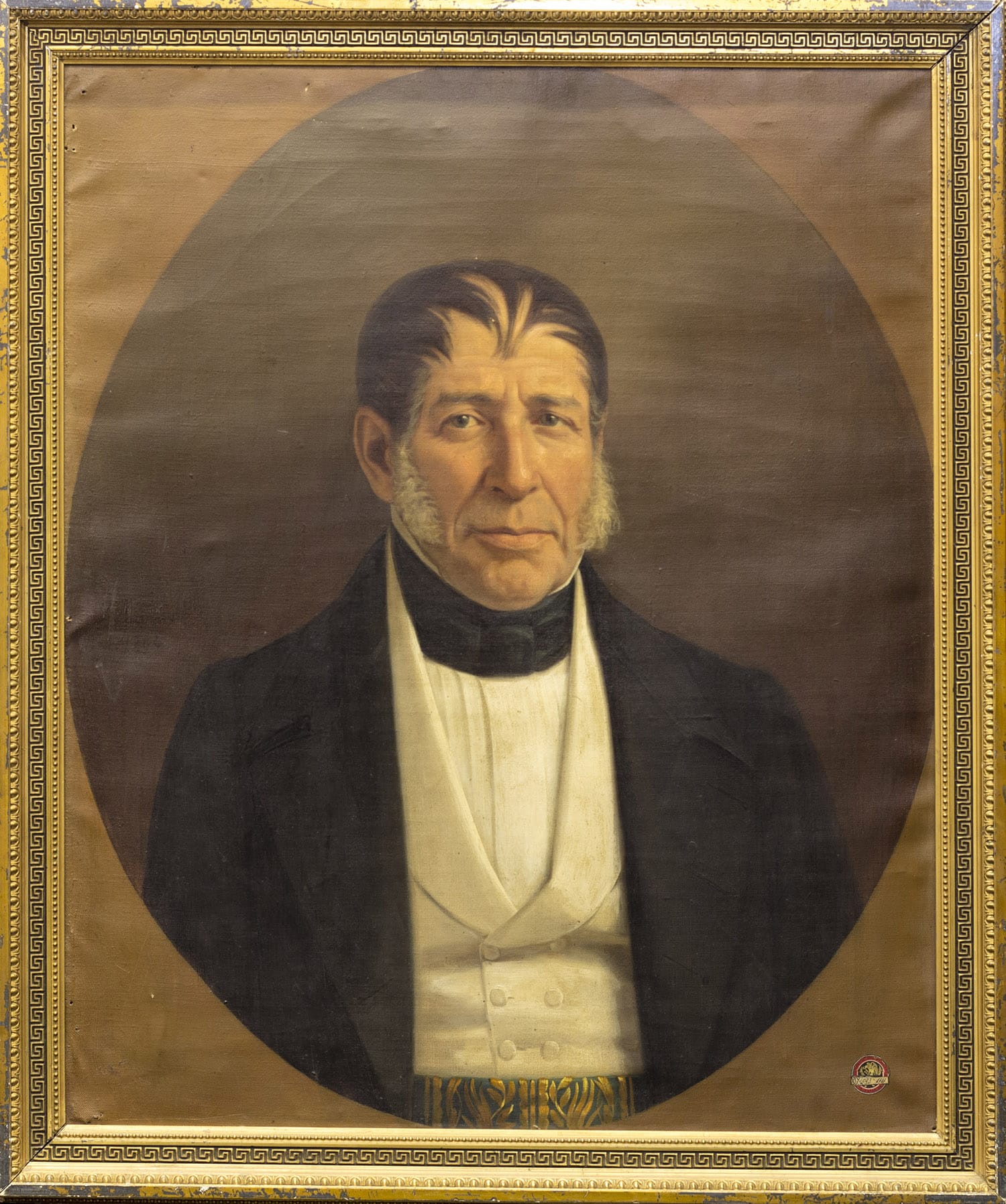
Jose Joaquin de Herrera knew that Mexico could not win a war with the US, and he feared what a war with the US would do to Mexico’s Republic — however, he could not convince other Mexican politicians to understand this reality.
President Herrera was accused of treason for even accepting the US ambassador to hear the US offer.
General Jose Mariano Paredes, an extreme opportunist, saw a nice little opportunity for himself, marched his army to Mexico City, and deposed Herrera. Paredes then prosecuted the war against the US without considering whether Mexico could win. Mexico had a repeated issue with opportunist generals, who thought their maneuvers and positioning could help them attain the presidency, undercutting the war effort. General Santa Anna followed this same pattern.
However, it a matter of national pride that the Mexican Army be sent regardless of the losses incurred by the army. Because again, as with the illegal aliens coming into the US, Mexico’s Spanish-blooded aristocracy views most of the Mexican population as entirely expendable.
Consistently, from Paredes to Santa Anna, the Mexican politicians and generals sacrificed their Mexican citizens when they were offered repeated terms to Mexico, asking for the territories they could not control and offering compensation. But in each case, the career needs and “honor” of the elites took precedence over the concern for Mexican lives.
Mexican elites sacrificed Mexican lives and resources to protect this inflated sense of self-esteem. Hispanic leaders had a degree of ego and self-confidence that had no correspondence to their abilities. (This is very similar to the new claims made by modern-day Mexicans when they claim US territory.)
Overall, this fits into a historical pattern of the Mexican elites treating their population horribly.
The Mexican Army was a joke because it was an entirely elite affair, which has been a long-term problem with Mexico. It is a highly exploitive system, which, for some reason, most Mexicans seem to be proud of — and want to be exported to the US through the Mexican federal government taking control of US states. It is too bad that Reconquistas can’t go back in time and discuss how much allegiance Mexicans in the mid-1800s had to Mexico.
There have been complaints about what happened to Mexico after the war.
Mexico’s worsened domestic turmoil and losses of life, territory and national prestige left it in what prominent Mexicans called a..
“State of degradation and ruin.”
Yes, and this was entirely avoidable, but the Mexican elites could not abuse themselves of the notion that they “controlled” the northern territories, and that they could not defend them.
The Mexican elites sacrificed their people for no other reason than to make a show — and the Reconquista Movement does not bring that fact up a single time nor how this fits into the pattern of how Mexicans are treated by their government generally.
Our Interpretation of Mexico’s Claim to the Territories
The following quote is an interpretation of the Mexican claim.
..the war’s advocates viewed the territories of New Mexico and California as only nominally Mexican possessions with very tenuous ties to Mexico. They saw the territories as actually unsettled, ungoverned, and unprotected frontier lands, whose non-aboriginal population, where there was any at all, represented a substantial—in places even a majority—American component. Moreover, the territories were feared to be under imminent threat of acquisition by America’s rival on the continent, the British.
How could anyone disagree with this interpretation of the Mexican territories?
What Was the Mexican Defense of Alta California and the New Mexico Territory?
This entire quotation has to be read to be believed. The story is much longer than this, but this is the truncated version.
Kearny and his troops encountered no Mexican forces when they arrived on August 15. Kearny and his force entered Santa Fe and claimed the New Mexico Territory for the United States without a shot being fired. Kearny then took the remainder of his army west to Alta California.[83] When he departed with his forces for California, he left Colonel Sterling Price in command of U.S. forces in New Mexico. He appointed Charles Bent as New Mexico’s first territorial governor. Mexico had issued a proclamation that unnaturalized foreigners were no longer permitted to have land in California and were subject to expulsion.[95] With rumors swirling that General Castro was massing an army against them, American settlers in the Sacramento Valley banded together to meet the threat.[96] On June 14, 1846, 34 American settlers seized control of the undefended Mexican government outpost of Sonoma to forestall Castro’s plans.[97] One settler created the Bear Flag and raised it over Sonoma Plaza. Within a week, 70 more volunteers joined the rebels’ force,[98] which grew to nearly 300 in early July.[99] This event, led by William B. Ide, became known as the Bear Flag Revolt. On July 9, 70 sailors and marines landed at Yerba Buena and raised the American flag. Later that day in Sonoma, the Bear Flag was lowered and the American flag was raised in its place. As Frémont landed, Stockton’s 360 men arrived in San Pedro.[110] General Castro and Governor Pío Pico wrote farewells and fled separately to the Mexican state of Sonora. Stockton’s army entered Los Angeles unopposed on August 13, whereupon he sent a report to the Secretary of State that “California is entirely free from Mexican dominion.” The Californios under the leadership of José María Flores, acting on their own and without federal help from Mexico, in the Siege of Los Angeles, forced the American garrison to retreat on September 29. Frémont and the 428-man California Battalion arrived in San Luis Obispo on December 14[125] and Santa Barbara on December 27.[126] On December 28, a 600-man American force under Kearny began a 150-mile march to Los Angeles.[127][128] Flores then moved his ill-equipped 500-man force to a 50-foot-high bluff above the San Gabriel River. On January 8, 1847, the Stockton-Kearny army defeated the Californio force in the two-hour Battle of Rio San Gabriel. On January 12, Frémont and two of Pico’s officers agreed to terms for a surrender.[135] Articles of Capitulation were signed on January 13 by Frémont, Andrés Pico and six others at a rancho at Cahuenga Pass (modern-day North Hollywood).[135] This became known as the Treaty of Cahuenga, which marked the end of armed resistance in California. After upper California was secure, most of the Pacific Squadron proceeded down the California coast, capturing all major cities of the Baja California Territory and capturing or destroying nearly all Mexican vessels in the Gulf of California. Other ports, not on the peninsula, were taken as well. – Wikipedia
This is what should make Americans take the claims of Mexicans seriously about the Reconquista.
The Repeating Pattern of Non-White Immigration to White Countries
Conclusion
The Reconquista Movement is so utterly ludicrous and lacking in validity or logic that it can only be the province of those uneducated on the topic of the Mexican territories and the Mexican-American War. Even the foundational concept is self-contradictory as it denies the legitimacy of conquest, while itself promoting a future conquest by either the Mexican government or Mexicans in the US once they “take over.”
Basic Logic 101: To “Re Conquer” Something, You Must First Have Conquered It
Reconquista is taken from the Spanish Reconquista of Muslim-taken land. But that was an actual retaking of previously owned territory. Mexico never conquered the claimed northern territory.
They only were able to claim it.
Since American Indians were not a cohesive group that could disagree or challenge the claim, the claim persisted without the Spanish and then the Mexican government having to do anything to support the claim.

Review this map; notice “British Oregon” above Alta California. The British claimed all of this territory, but they could not support the entirety of the claim. They eventually negotiated with the US for the northern part to be British (which became Canada) and the southern portion to be the US.
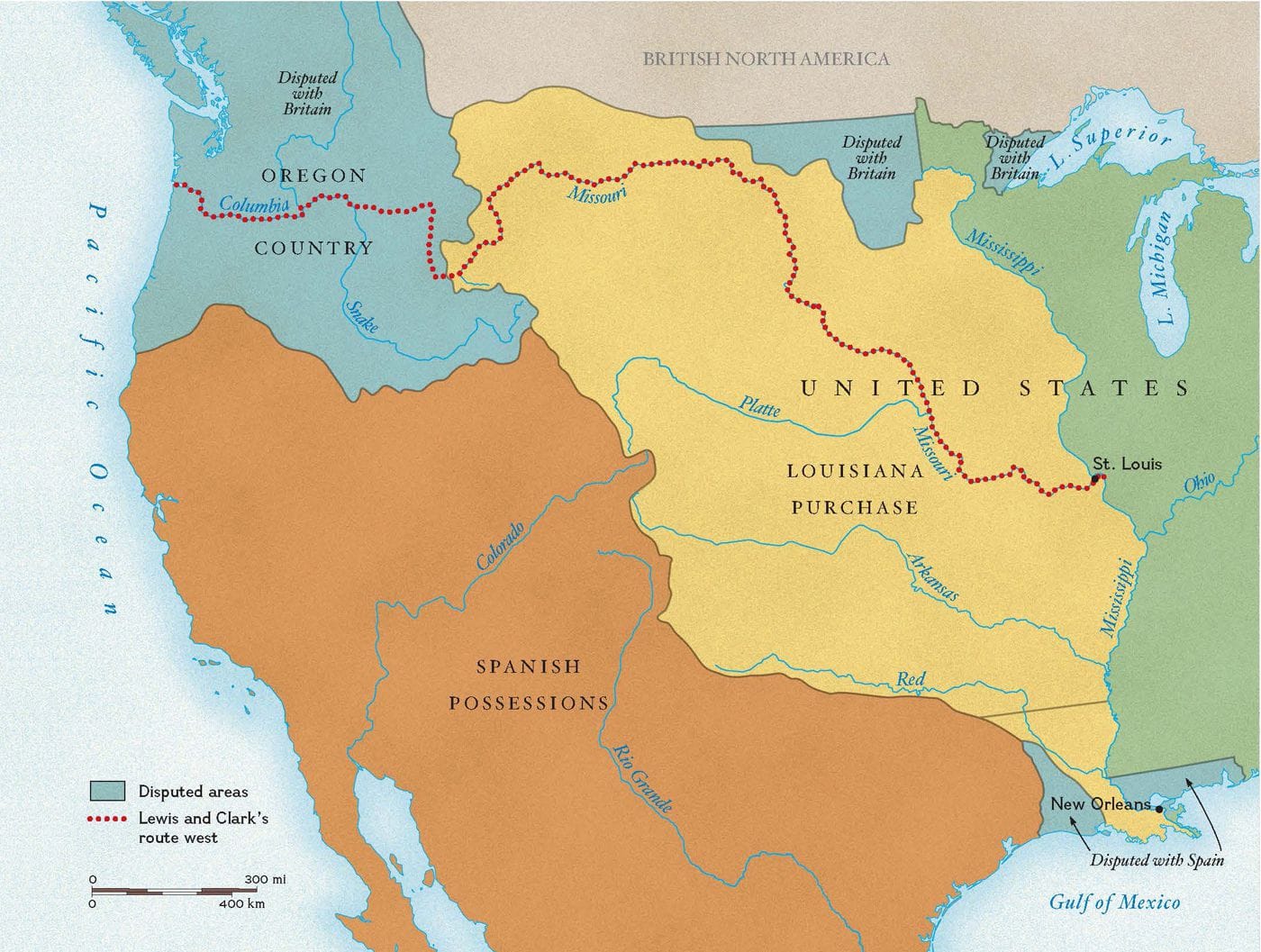
France once claimed the entire middle of what is now the US, and they eventually sold out to the US in the Louisiana Purchase. Both France and England negotiated and sold territory they would not have been able to defend, and they probably did not know that much about it.
At that time, countries would routinely claim enormous land tracks that they had barely explored. Reconquista Movement proponents don’t realize that a claim is just that. They instead seem to assume that a claim = controlled territory.
Mexico was the only country to seem to think that it had to be attacked to give up an area that was primarily controlled by Indian tribes.
The Number of Mexicans in All of the Northern Claimed Territory Before the Mexican American War
While challenging to find for sure, it was undoubtedly a tiny percentage of the country of Mexicans living in all of the northern territories, and most of them were divorced from Mexico as Mexico could not provide any support. Naturally,…Mexico did not have control over the territory. Mexico deceived Mexican settlers into the northern territories by making them think Mexico controlled the territory when the settlers lived at the mercy of the American Indians. Furthermore, the Mexican Government could barely figure out the politics of Mexico City much less provide any defense of the northern territory, or as it turns out a defense of inland Mexico. Mexico displayed such incompetence and weakness during the Mexican-American War that it is a miracle they were able to keep the country together to the present day.
Mexico had a claim they could not defend or take from the American Indians. As such, none of the Mexican claims for the northern territory should be taken seriously. The lands of the US Southwest were taken or conquered, but they were captured by the American Indians, not by Mexico.
Here is why.
The Mexican-American War amounted to an invasion of Mexico that was required for one purpose only: to obtain a treaty from the Mexicans. If the issue had been the possession of the northern territories, the US would have hardly needed to engage in the war. It is, in fact, a question why the US took Mexico City to gain a treaty saying they “legally” took possession of something that was never Mexico’s in the first place.
Cheryl Gumulauski expresses this.
Mexico claimed these regions on paper from 1823, and by 1848 they were all in US hands. Facts are Mexico cut a deal with Spain upon their independence and Spain awarded Mexico the territories of the US today, which were not their to award and had never been successfully settled by them.
Then Mexico could not conquer the peoples whose land they attempted to appropriate to their new state, and held it on paper less than 25 years. They have no claim to US land. NONE.
The Region of Aztlan?
More extreme claims are proposed that the Aztec empire also stretched up through the US Southwest.
Hispanic rights leaders insist there’s nothing to the so-called reconquista, sometimes referred to as Aztlan, the mythical ancestral homeland of the Aztecs that reportedly stretches from the border to southern Oregon and Colorado.
Even as organizers urged marchers to display U.S. flags, the theme of reclaiming “stolen” land remained strong. One popular banner read: “If you think I’m illegal because I’m a Mexican, learn the true history because I’m in my homeland.”
“We need to change direction,” said Jose Lugo, an instructor in Ethnic Studies at the University of Colorado at Boulder at a campus march last week. “And by allowing these 50,000, 50 million [immigrants] to come in here, we can do that.”
“You’re seeing people marching with Mexican flags chanting, ‘This is our country.’
“No other immigrant group in U.S. history has asserted or could assert a historical claim to U.S. territory. Mexicans and Mexican-Americans can and do make that claim,” he said. – Washington Examiner

All maps that we could find of the Aztec empire show it as an area roughly 1/5th the size of current-day Mexico. This means that the Spanish conquered the Aztecs, the most powerful and organized group in the peninsula, and then began conquering other parts of modern-day Mexico.
Now, let us zoom in on this area.
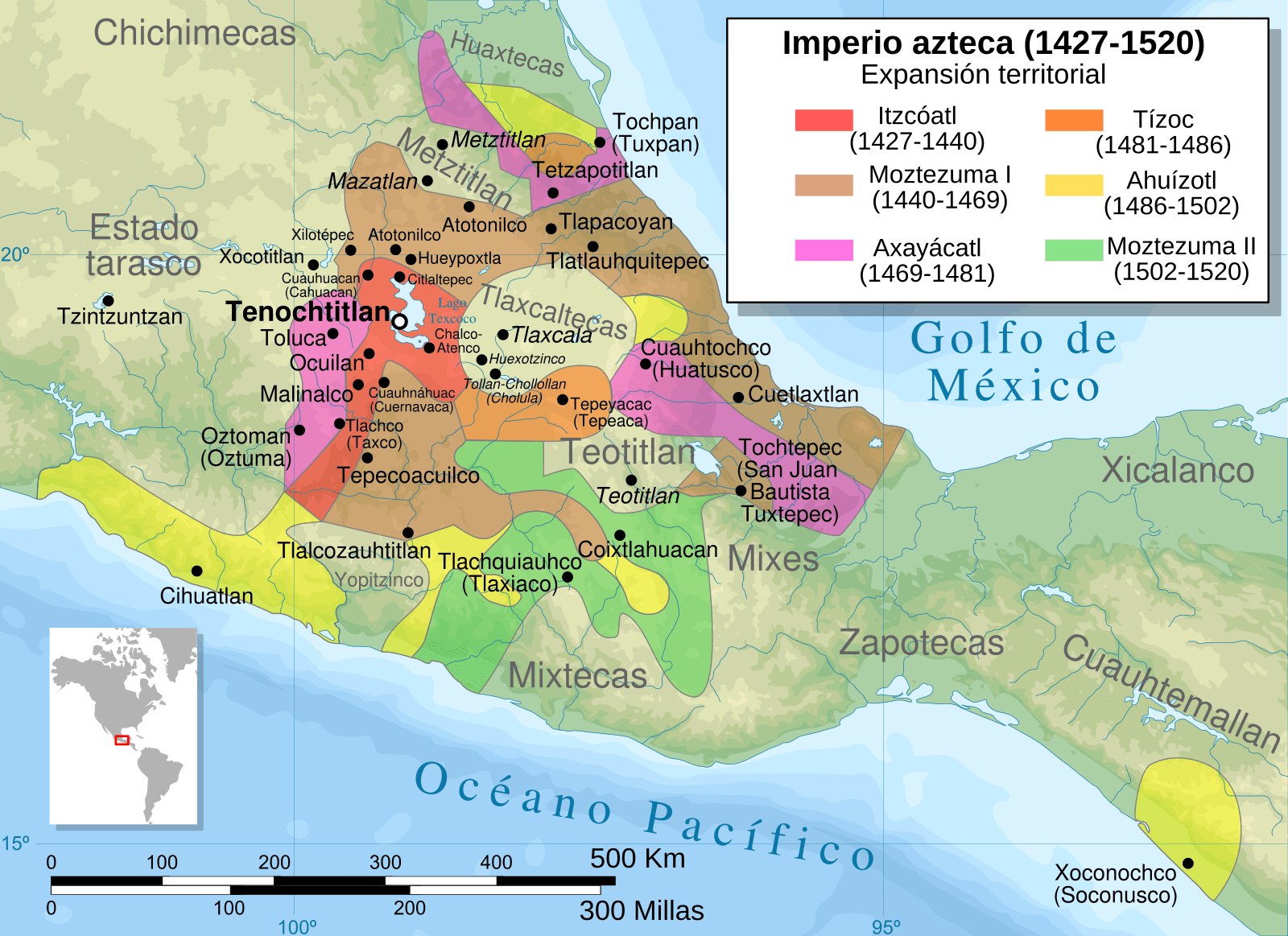
The previous map overstates the integrity of the Aztec empire. The coloration showed when different areas within the “Aztec blob” were aligned with Aztecs, and when they were not. Cortez picked up enormous numbers of armed tribal warriors who helped Cortez defeat the Aztecs.
And it is not difficult to see why. The Aztec empire is normally presented in a positive light by Mexicans. Of course, the very term “Aztlan” attempts to present the Aztec empire as a great power and something worthy of acclaim. However, the reality was the rise of the Aztecs led to the decline of the conquered areas, as is explained in the following quotation.
Archaeology has shown that the previous prosperity and mixed economy of the surrounding towns became increasingly devoted to agricultural monoculture – and both the quality and the quantity of basic domestic goods like pottery and clothing declined severely under Aztec rule. In other words, conquest by the Mexica led to impoverished, ragged peasants being forced to grow food to send to the capital instead of looking after themselves.
Tenochtitlan prospered and grew rich on the tribute of vassal provinces – but it was highly vulnerable if its external trade routes were ever cut off. When Cortés and his allies laid siege to the city, preventing the import of food from the regions, the result was mass starvation.
As all the provinces which had been raided by Montezuma and placed under his rule were ill disposed towards the Mexicans, and that as their inhabitants were carried off by force to the wars, they did not fight with good will; indeed, it was from those very men that they received warnings, and for this reason they had defended their country to the best of their ability.
…
Montezuma kept garrisons of many warriors stationed in the provinces in addition to the great force he could bring from the city, and all the provinces paid tribute of gold and silver, feathers, stones, cloth and cotton, and Indian men and women for sacrifice and others for servants.
– quoted by Bernal Diaz, The True History of the Conquest of New Spain (1568) – Quora
“Aztlan” was the origin story told by Aztec people. No one knows where it was or if it was real. Therefore, it is extremely peculiar that Reconquista proponents would evoke Aztlan as a specific area and stretch far beyond the boundaries of the Aztec area and into the US Southwest. This is a bit like evoking a mythical Norse city of Asgard and giving it a specific geographic overlay onto Scandinavia.

Here is a riddle. What part of Scandinavia corresponds to the region of Asgard, and that would be claimed by an invasive race who wanted to make a claim based upon Norse mythology?
Not only is a claim being supported for Spain’s unconquered territory but now the Aztecs, whose origin story has been enlarged by the Reconquista to reach southern Colorado. And Mexicans from all over Mexico (only a minority of which are related to the Mexica Aztecs) who illegally immigrated to the US, the vast majority in just the past few decades, are to be reunited with their brethren in Mexico in one Latino region and a united Latin people?
This is the story we are supposed to take seriously.
This is what the designers of the Reconquista and “Aztlan” construct propose.
Although, now that we type this out, how is this different from the claims of Jews that Israel and close territories belong to them? That is because the land was promised to the chosen people in the Torah. While Mexicans and Latin Americans generally tend to be among the weakest performers academically in the US, Jews tend to be among the highest performers. Yet, they both draw upon mythology to support their territorial claims.
Who knew that Mexicans and Jews had so much in common?

The Jews are positive that God gave them Israel and gave it only to them. Jews, for thousands of years, did not live in the state of Israel but instead lived all through Europe. Israel was carved out of the Middle East to create a homeland for the Jews based on the Torah. While the initial logic was due to the Holocaust, the area Israel was cut from was based on the Torah. For whatever reason, they have not used the term Jewish Reconquista, but it is essentially the same claim. As with Mexican Reconquista proponents, they enormously exaggerate their previous claims to the area — and the area initially cut out for them by the UN is continually being expanded, displacing Palestinian territory, which has coincided with a massive population increase on both the Jewish side and the Palestinian side since Israel was first founded.
Jews have been forcibly pushing out the Palestinians, and a Jew may arrive from New York to live in Israel. Jews feel empowered by their ancient text to take ownership of the land for the chosen people. The entirety of the Jewish ability to be protected and to take this land is based upon military support from the US, with Israel being a client state of the US and receiving billions in loans that are never paid back. This can be considered a type of Jewish Reconquista, which is as false as the Mexican Reconquista, as a Jewish state like that of modern Israel never existed.
Will Aztlan Still Function on the Basis of Aztecian Principles?
A number of questions that arise from this “re-instantiation of Aztlan” quickly come to mind.
- The Aztecs had a social structure that would conflict with the culture installed by the Spanish after their conquest of Mexico. Which social structure would predominate? This leads to the following question.
- Once the US Southwest is reunited with Mexico, wouldn’t that mean the Mexican elite of pure Spanish blood would administer the region? That is not the peasants of Mexico that immigrated, but the elite that stayed behind that were responsible for oppressing Mexicans when they were back in Mexico. Again, is that something the Reconquista proponents have thought through, or will they work it out once it happens?
- Would this Aztlan region continue to sacrifice blood to keep the sun burning in the sky?
- Will this new Aztlan region based upon Aztlan mythology raid neighboring states in the US to acquire bodies to be filleted and to have their skulls placed on enormous skull racks? If so, shouldn’t these states be warned that many of them will get their hearts cut out of their bodies?
- Will the other nearby states be forced to pay tribute to this new Aztlan territory in the US? How much have the Reconquista proponents thought this through?
- Mexico is a predominantly Catholic nation. However, the Aztecs weren’t Catholic; they believed in a religion centered around 200 gods. The “flayed God” named Xipe Totec was central to their blood sacrifice ceremonies. Xipe Totec flayed himself to give good to humanity. The Aztecs paid homage to Xipe Totec by flaying their human sacrifices and having their priests wear this skin, which was dyed yellow (to make it “golden”), for 20 days, which they would then dance in a ceremony with the skin robe and with the severed human heads. After, they would make soup out of the sacrificed thigh meat. None of these things are considered acceptable by the Catholic Chuch. And there is another problem. It is very unlikely the Aztecs would have tolerated competing religions. Which religion will predominate, or will the region choose between the two?
I ask these questions because is it just me, or do there appear to be a lot of holes in the hypothesis?
The tribes that surrounded the Aztecs (or the people of Tenochtitlan, as they were not in control of areas very far outside of Tenochtitlan, and they both received tribute and raided these other tribes for bodies to sacrifice) were very quick to turn on the Aztecs. This is little surprise as the Aztecs, as Tenochtitlan was a city of 300,000, could never have been defeated without enormous support from the surrounding tribes. Furthermore, the presentation of the Aztecs’ control over the tribes in its proximity is overstated by many sources that seem to oversimplify the centralization of the Aztecs.
To the Aztec, 1519 was a year that began with their empire as the uncontested power in the region. Its capital city, Tenochtitlan, ruled 400 to 500 small states with a total population of five to six million. – National Geographic
The Aztecs may have been uncontested, but they “ruled” 400 to 500 small states. Or were these small states simply in fear of them? It is obviously the latter.
The Aztecs involved in the administration of these states, or did they send them tribute and were raided by the Aztecs for human sacrifice? Again, it is obviously the latter.
Having read several accounts of the Aztecs, it is clear that most authors are not interpreting the information they are providing. They are trying to apply the model of an integrated European state over the Aztecs when it was instead several tribes that only had an “alliance,” called the triple alliance of (Tenochtitlan, Texcoco, and Tlacopan). The following quotation expresses this.
The empire was also territorially discontinuous, i.e. not all of its dominated territories were connected by land. For example, the southern peripheral zones of Xoconochco were not in immediate contact with the central part of the empire.
Though they were not described by the Aztec this way, there were essentially two types of provinces: Tributary and Strategic. Strategic provinces were essentially subordinate client states which provided tribute or aid to the Aztec state under “mutual consent”. Tributary provinces, on the other hand, provided regular tribute to the empire; obligations on the part of Tributary provinces were mandatory rather than consensual. – Wikipedia
There was frequent warfare between the different tribes in the area as the (Tenochtitlan or Mexica) Aztecs and other tribes like the Tlaxcalan, the Purépecha Empire tried to expand their regional control, and the Tenochtitlan or Mexica had only become the preeminent power by 1486, or 23 years before Cortez’s arrival. An alliance with enormous animosity between the parties and Cortez proved a very shaky alliance once put to the test.
Speaking of the resentment built up by both continual payment of tribute and of raiding tribes for human sacrifice, it is important to review what the Aztecs were doing and the large scale of the operation of human sacrifice that they ran.
The following describes the belief that supported the need for human sacrifice.
It was through blood sacrifice that the Sun would be maintained and thereby stave off the end of the world. It was under this new, militaristic interpretation of Huitzilopochtli that Aztec soldiers were encouraged to fight wars and capture enemy soldiers for sacrifice. Though blood sacrifice was common in Mesoamerica, the scale of human sacrifice under the Aztecs was likely unprecedented in the region. – Wikipedia
The following describes the process of human sacrifice.
Priests carried the body to another ritual space, where they laid it face-up. Armed with years of practice, detailed anatomical knowledge, and obsidian blades sharper than today’s surgical steel, they made an incision in the thin space between two vertebrae in the neck, expertly decapitating the body. Using their sharp blades, the priests deftly cut away the skin and muscles of the face, reducing it to a skull. Then, they carved large holes in both sides of the skull and slipped it onto a thick wooden post that held other skulls prepared in precisely the same way. The skulls were bound for Tenochtitlan’s tzompantli, an enormous rack of skulls built in front of the Templo Mayor—a pyramid with two temples on top. One was dedicated to the war god, Huitzilopochtli, and the other to the rain god, Tlaloc.
Eventually, after months or years in the sun and rain, a skull would begin to fall to pieces, losing teeth and perhaps even its jaw. The priests would remove it to be fashioned into a mask and placed in an offering, or use mortar to add it to two towers of skulls that flanked the tzompantli.For the Aztecs—the larger cultural group to which the Mexica belonged—those skulls were the seeds that would ensure the continued existence of humanity. They were a sign of life and regeneration, like the first flowers of spring.
But the Spanish conquistadors who marched into Tenochtitlan in 1519 saw them differently. For them, the skulls—and the entire practice of human sacrifice—evinced the Mexica’s barbarism and justified laying waste to the city in 1521.
The scale of the rack and tower suggests they held thousands of skulls, testimony to an industry of human sacrifice unlike any other in the world.
For the Mexica, human sacrifice was key to the health of the world. Recent finds show that a vast rack of skulls (reconstruction below) stood in a temple at the heart of their capital, Tenochtitlan.
Human sacrifice occupied a particularly important place in Mesoamerica. Many of the region’s cultures, including the Maya and the Mexica, believed that human sacrifice nourished the gods. Without it, the sun would cease to rise and the world would end.
Some researchers also argue that killing captives or subjects both establishes and reinforces hierarchy in large, complex societies.
“The killing of captives, even in a ritual context, is a strong political statement,” Verano says. “It’s a way to demonstrate power and political influence—and, some people have said, it’s a way to control your own population.”
The mix of ages and sexes also supports another Spanish claim, that many victims were slaves sold in the city’s markets expressly to be sacrificed. – Science Magazine
The skull rack used by the Aztecs was called a Tzompantli. Human sacrifice was not limited to the Aztecs. Human sacrifice is estimated to go back to between 1200 and 400 BC in Mesoamerica.
Blood Sacrifice as a Form of Terrorism and Enforcing State Control?
The human sacrifice central to Aztec society is nearly always presented as a direct result of needing to give a blood offering to their god Xipe Totec. However, the extreme and horrific violence involved with the sacrifices is a clue that there was another reason for the sacrifices. This is explained in the following quotation.
..the Aztec Empire also used mass human sacrifice as a tool of propaganda and terrorism. The warriors of conquered cities would be sacrificed in large numbers, and then those cities would be ordered to provide additional captives for sacrifice every year as a tribute. Aztec vassal rulers would be invited to witness these ceremonies, in order to overawe them and show the futility of resisting the Triple Alliance:
“The lords and principals who were called to the feast and sacrifice were horrified, beside themselves, on seeing the killing and sacrificing of so many men; so terrified they dare not speak.” -Diego Durán, The History of the Indies of New Spain, 1581
The most notorious example is the dedication of the new Great Temple in Tenochtitlan in 1487, where according to contemporary accounts 80,400 people were sacrificed in a single ceremony; though modern accounts suggest that the number may have been “only” 20,000 or even as low as 4,000. The victims were supplied by Aztec subject provinces, and stretched out in converging lines from the central pyramid, where four teams of priests worked constantly for four days to kill them all.
So how many people did the Aztecs sacrifice each year? Cortés himself estimated a number in the low thousands. Some modern historians calculated as many as 250,000, which would be 1% of the population per year, but others reject that figure as much too high.
It should be remembered that while Tenochtitlan was by far the largest city in Central America, there were hundreds of smaller towns and cities, all with their central temples where sacrifices were performed. Bernal Diaz, in his autobiographical history of the Spanish conquest, mentions that every town that Cortez’s expedition entered had its wooden cages where multiple sacrificial victims were held ready for the ceremonies. (‘Being ‘fattened up for slaughter’, as Diaz describes it.)
Aztec soldiers deliberately fought to take prisoners, not to kill their opponents -something that handicapped them when fighting the Spanish – because they wanted to gain victims for sacrifice. Indeed, they themselves claimed that they left certain enemy cities unconquered – most notably Tlaxcala – so they could attack them regularly and thus have a reliable supply of prisoners-of-war to kill. – Quora
The sacrifices the Aztecs demanded from their tribute tribes highlight another interesting and curious feature of the reasons for what they did.
Part of the reason for the anger from neighboring tribes was that Aztecs insisted on sacrifices of the tribal leaders, or the most beautiful or talented people. – Quora
This is further supported in the following story, which recounts a sacrifice that seems less intended to boost the harvest than to send a horribly disturbing message to a political/military opponent.
The Aztecs, or Mexica, claimed that they migrated to this region from the north. They were initially given hospitality by the city of Culhuacán, but some of them felt that such a subordinate role was unworthy. They arranged a marriage between one of their leaders and the daughter of the king of Culhuacán – then the leader sacrificed her, skinned her, and went back to meet her father wearing her skin as a cloak. He recognised his daughter’s remains, and in horror and disgust attacked the Aztecs and had them expelled from the city. – Quora
This is also explained by the fact that the Aztecs were a highly warlike society, and their blood sacrifices, whether they began this way or not, served a dual or perhaps multiple purposes of supporting their war aims.
For ninety years, the Aztec Empire expanded through almost constant warfare. It is estimated that at their peak they subjugated around two-thirds of the population of the region – 12-15 million people – though some states remained defiant and independent. Other provinces rebelled and had to be reconquered. – Quora
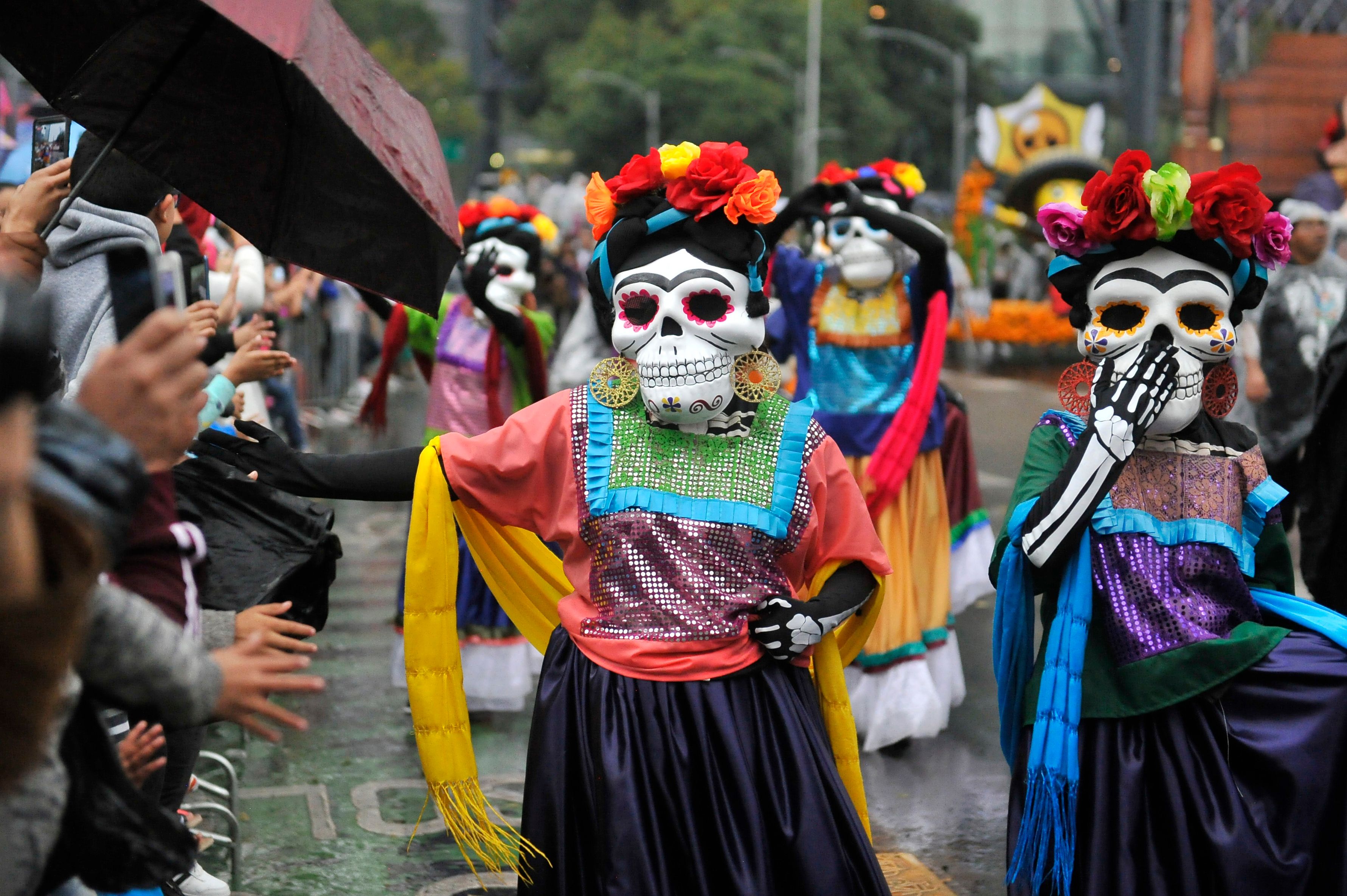
The “El Día de Los Muertos” or “Day of the Dead” celebration so common in Latin America seems quaint, like a Hispanic Halloween, until one realizes that The Day of the Dead is connected to human sacrifice. The relationship from the origin of The Day of the Dead to human sacrifice has been whitewashed to being just a celebration of the cycle of life. However, the reality can be inferred and found if one looks for it.
The Aztecs set aside the ninth month of the Nahuatl calendar for the souls of deceased children; the tenth was to honor the adults. During this celebration, human sacrifices were made to insure the flow of fresh blood, so vital to regeneration.
The evolution of the Aztec and Maya Empires were cut short by the Spanish conquest, and it was not difficult for the conquering priests to persuade the recent converts to shift their months of the dead to a two-day celebration, known as All Saints and All Souls Day. The resulting mesh of pagan and Catholic rituals formed an interesting tradition in Mexico which lingers to this day. – Peter Greenberg

Cute little skulls are part of the festivities. However, this is less innocuous than most participants realize.

The SS-Totenkopfverbände, or Death’s Head Unit of the Nazis, was responsible for the administration of the concentration camps. A human skull was incorporated into their uniform on their hat and often on the lapels. If you celebrate skulls using skull iconography, you are probably not just “baking cookies.”
Confusing Fear of an Empire with an Organized State
There is a bit of a disconnect because modern states don’t have a system of tribute and provision of humans to the capital to sacrifice. Imagine if all that Germany did was receive tribute from cities outside of its capital, Berlin. Then, these cities were continually raided by Berlin forces for humans to sacrifice in public ceremonies.
Is this a cohesive, organized state?
It is estimated that the Spanish had assembled between 80,000 and 200,000 men from the surrounding tribes to fight with Cortez. This means that the vast majority of the fighting occurred not between the Spanish and the Aztecs but between the various tribes that sought to depose the Aztecs with the assistance of the Spanish. The Spanish are estimated to have lost between 450 and 860 men. Total losses of all Indian participants (including civilians) is estimated at roughly 60,000.
The conclusion is that the Aztecs controlled a small region within the blob that is usually associated with the Aztecs. People forget that while the Aztecs were advanced in the region, they lacked the technological abilities to administer a vast empire.
Totonacs of Cempoala, the Nahaus of Tlaxcala (who his small initial contingent initially fought in 1519, and they could have killed all of Cortes’ men but let them live once he realized they could be used against the Aztecs), the Otomis. This alliance with the Tlaxcala allowed Cortez to enter Tenochtitlan with 5,000-6,000 Tlaxcalans and 400 Totonacs in addition to these Spanish troops during his first visit to the city.
Notice where these areas are on the map. Tlaxcala is right next to Tenochtitlan, roughly 80 miles away. They turned on the Aztecs very quickly. They were a different tribe. How is this entire blob on the map called the “Aztec Empire?”
This issue with romanticized Aztecs is explained in the following quotation.
The key achievement of all these militant groups was the promulgation of partial truth, which by its very incompleteness became part of today’s Big Lie. Racism, discrimination, labor exploitation — this and more, of course, have been the burdens of the Mexican American experience. They are also universal pathologies, and quite predictable given the peculiar relationship between a vast democratic and capitalist American nation and an autocratic, economically backward Mexico. But instead of being pondered in that light, these shortcomings are defined as uniquely the sins of white Americans. The result of the whitewashed new history is that Aztec cannibalism and human sacrifice on a scale approaching the daily murder rate at Auschwitz are seldom discussed as a part of the Mexican past. While Cortes is loudly condemned, we do not hear that the Tlaxcaltecs and other tribes considered European saviors rather than enslavers. – Mexifornia
With a small contingent of several thousand men (the numbers started with 500 in 1519 but was added to through continuous reinforcements from Cuba), Cortes and his Indian allies ended the Aztec Empire in 1521, which was only two years after his first arrival in what is now Mexico. Doing so with such a small force, albeit helped much by smallpox, indicates that the Aztecs were not a formidable empire versus a European power. Spain applied very little manpower and money to overpower the Aztecs. Cortez, while considered by history to be a great conqueror, was, but his primary skill was organization and negotiation rather than being a battlefield commander.
This is explained in the following quotation.
Cortes ability was not military nor psychological warfare, it was diplomatic. He explored the weakness of the Aztec ruling, an empire with thousands of subjugated enemies. The Spanish Pizarro did the same with the Inca Empire in Peru. He explored the brutality of the Inca ruling to recruit a force powerful enough to defeat them. – George Freidman
Cortes mostly served in administrative roles before he campaigned against the Aztecs. In 1506 and from 1511 to 1519, he served in the conquest of Hispaniola (present-day Haiti/Dominican Republic) and Cuba (where the Spanish defeated the Taino tribe). Before his Aztec campaign, he was the mayor of Cuba. If Spain had intended for Cortez to lead a conquering force, rather than an expeditionary force, into what is now Mexico, Spain would likely not have sent Cortez. It would have sent a far larger initial force instead of 11 ships, about 100 sailors, 500 soldiers, and 16 horses. The only reason Cortez became the one to conquer the Aztecs is that he ignored his orders to stop exploring the area. Cortez had to fight another Spanish force that was sent to stop him. This is explained in the following quotations.
Over the following months Cortés would take matters into his own hands, disobey the governor’s orders, and turn what had been intended to be an exploratory mission into a historic military conquest. – National Geographic
And..
After Cortés sailed, Velázquez sent an army led by Pánfilo de Narváez to take him into custody.
But Cortés used the same legal tactic used by Governor Velázquez when he invaded Cuba years before: he created a local government and had himself elected as the magistrate, thus (in theory) making him responsible only to the King of Spain. Cortés followed this tactic when he and his men established the city of Villa Rica de la Vera Cruz, also known as Veracruz, seven miles from the harbour of San Juan de Ulua. An inquiry into Cortés’ action was conducted in Spain in 1529 and no action was taken against him. – Wikipedia
As an interesting note, Cortez left Mexico for Spain in 1529 and returned to Mexico in 1530, where he found the country in anarchy.
The Aztecs Also Lived in….Colorado?
Why would some Mexicans propose that the Aztec empire stretched to Colorado?
How exactly would a society with the technological sophistication of the Aztecs have conquered, much less administered, such a massive territory? The Aztecs were barely in control of the area of an 80-mile radius around Tenochtitlan. At that time, with the lower (compared to European) technologies, organizing and controlling such large territories was far more challenging. This is expressed in the following quotation.
Over the last 5,000 years, the political world has become more concentrated in terms of geographical area. The largest polities of 3000BC(in Egypt and Mesopotamia)were tiny compared to the present ones. The largest polities of 2,000 years ago (Han, Rome) were already much larger but still smaller than the present largest polities(Russian Federation, Canada, the United States, China). When one considers the relative share of the world population, the picture is less clear, but the trend toward greater concentration still prevails. Technological advances have made it possible to coordinate ever-larger numbers of people over ever-larger distances. Hence the number of separate political entities has tended to decrease, albeit with large fluctuations. – Expansion and Contraction Patterns of Large Polities: Context for Russia
This claim around the Aztec empire reaching into the US Southwest is another example of wishful thinking, where history is tortured to support a migration claim.
How Mexico’s Population Bomb Fits in the Equation
Since the Mexican-American War, the Mexican population has grown from 7.5 million to 128 million Mexicans living in Mexico, which must be added to 37 million. This comes to 165 million or 22 times the 1848 level.
Just like the US, Mexico is over its carrying capacity, and nearly all Mexicans (save for the elite) want to move from Mexico to the US. They want to tell Americans that they have the right to immigrate to a white country and that they can’t be removed because, after all, Mexico “owns” the Southwest.
If Mexico had employed some family planning, it would not be in the terrible situation it currently is. This need to migrate from an unsustainable system that has never treated its citizens well is a significant motivator to revise the US Southwest as still rightfully belonging to Mexico.
Furthermore, other countries in Latin America also have large numbers of citizens that, while they can’t imagine some Reconquista claim, also want/need to immigrate to the US illegally.
Latin America is filled with failed states that now, without out-of-control populations, “must” immigrate to predominantly white countries. There are a number of wealthy in these countries who encourage migration because they have no intention of doing anything to improve the lives of these populations.

When the small percentage of Mexicans and other Latin Americans that are caught crossing the border are captured, the conditions of the holding (called “cages” by pro-migrant groups and the Hollywood elite), even when the numbers are enormous, are blamed entirely on the US, not on the conditions in the countries of origin of these individuals who are considered an excess population by the political structures south of the border. Furthermore, it is not only the people in this picture but millions of Mexicans and other Latin Americans, in fact, a substantial percentage of the populations in all of the countries of Latin America who have no interest in living in their countries.
What does this say about the conditions of life in these countries?
Each of these people must be processed through the US system and are normally set free in the US, even though it is obvious that none of these people will even be able to prove their claims of a right to stay in the US. We cover this topic in detail in the article. Is it True that Illegal Immigrant Children are Kept in Cages?
Pro-immigrant groups believe it is wrong for any Latin American person who wants to live in the United States not to be able to. What may be surprising is that Mexico itself deports illegal immigrants…..unless they are passing through and migrating to the US illegally. Through concepts like Reconquista or by appealing to empathy, nearly all immigrant groups superimpose the term “undocumented,” the actual meaning of which means being unable to produce documentation will be illegal. This is because they don’t think any person (or perhaps only Latin Americans) can be denied the right to live in the US, to receive a driver’s license, to send their children to school, to use and not pay for medical services, or to attend college. Any denial of any of these “rights” is considered immediately “racist” if not granted. The actual enforcement of laws is oftentimes presented as racist.
Notice many of these rights are not extended to US citizens.
The US made 170 years of investment that Mexico never could and lacked the technological capabilities to create a European-type functioning society, something Mexico has never done. Even during the Mexican Revolution, roughly 60 years after the Mexican-American War, 90% of Mexico’s population was living in poverty.
Reversing Roles
Imagine for a minute if the US and Mexico reversed roles. What if the US sent its most impoverished individuals to Mexico to obtain free health care services and free education to take Mexican jobs?
Imagine if 25 million poor and poorly educated white Americans already lived in Mexico (roughly the same percentage of the Mexican population that is currently living in the US for the US population), all of whom either came illegally or had parents who came illegally. What if they demanded Mexican driver’s licenses, not to be deported, called themselves “undocumented,” and that they were going to reproduce so much more than Mexicans that it was only a matter of time before they “reconquered” the northern part of Mexico? What if the Americans came in droves, overwhelming Mexican immigration’s ability to process them, and then after being put behind fences because of their overwhelming numbers, they complained of being put into “cages?”
Well, the one thing that would be different is at least the claim of reconquering would be true, as the US already conquered Mexico in the Mexican-American War.
However, if everything written above had already happened, how accepting would Mexico be of this situation? Americans who are unsure should probably travel to Mexico and see how long you can freeload off Mexican support services in Mexico.
Does Mexican Immigration Have No Impact on US Wages?
The following comment is a good example of the type of statements of many Americans regarding the impact of Mexican immigration on labor.
Given the opportunity, it’s exactly where wages would be in America if Republicans had their way. $2.00 an hour and tRUMPsters can’t figure out why their wages have never kept up with inflation or their jobs left for bigger profits for the CEO and his golf buddies. Blaming immigrants for our economic problems is deliberately being distorted by the people who employ people for $2 an hour. – The Denver Post (Comment)
Notice how this eliminates the large supply of illegal and recently illegal labor on labor costs. Immigrants from Mexico reduce wages. There is no way of denying this. They also lower labor standards, as does anyone working on a foreign worker visa. This is precisely why companies love hiring foreign workers. So your comment about “blaming” essentially denies explaining a factual relationship. Yet, 1/2 of the people that vote for one political power in the US are in denial of the impact of enormous quantities of labor entering the US on the wages of US citizens.
Immigrating to “Reconquor” Mexican “Land” or Conquer a White Society?
What are the Mexican and other Latin American countries migrating to exactly?
Because Reconquista proponents and many Latin Americans propose that they are only for the land, they have a strange way of showing it. There is plenty of unoccupied land in both Mexico and the US Southwest.
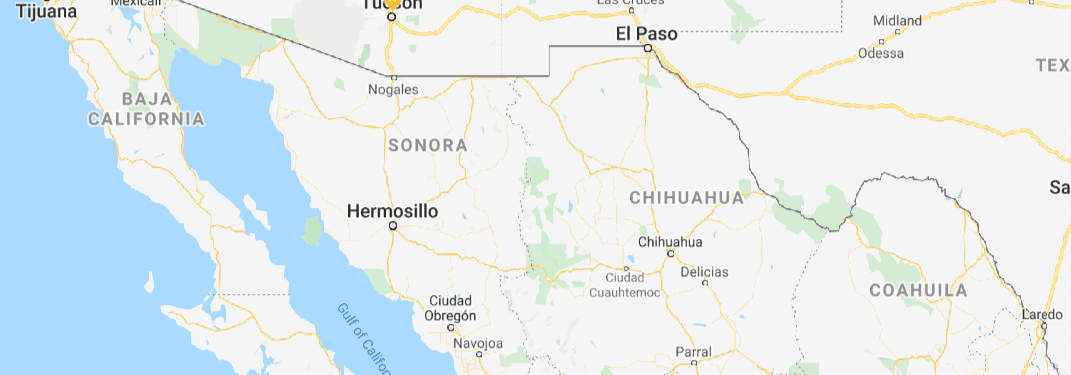
This is northern Mexico. There are only two cities of any significant size in this area. One Tijuana (population of 1.3 million) and Hermosillo (population of 840,000). This land does not need to be “reconquered.” Why aren’t Mexicans settling in this region? Mexicans are bypassing large areas of Mexican land to migrate to the US. Instead, they moved to the existing infrastructure, an artifact that Latin American science and industry had nothing to do with creating.
What is wrong with this land? Simple, it’s part of Mexico, and Mexico is a bad system that is bad for its people.
Mexico’s Destructive Wage System
Mexico’s wages are horrid, as is explained by the following quotation.
Only 269,000 Mexicans earn US $16 or more per hour, the wage level proposed for specialized automotive sector workers as part of the trade agreement announced Monday between Mexico and the United States.
According to data from the National Institute of Statistics and Geography (Inegi), just 0.5% of 53.8 million workers in Mexico earn such a salary
Average hourly wages for specialized auto sector workers and mechatronic engineers currently range on average between US $5 and US $7. – Mexico News Daily
And this quote.
Auto worker Ivan Flores spends his days transporting parts for U.S.-bound Audi SUVs at a plant in central Mexico, but he laughs when asked if he could ever buy one of the $40,000 Q5 SUVs the plant produces on his $2.25 per hour salary.
“For us it is a dream to buy a Q5; we never could,” said Flores, 40, who supports three sons on his roughly $110 weekly paycheck.
Notice that a man making $110 has three children. This is a consistent feature of Mexicans in Mexico and in the US; there is no correspondence between their incomes and their family sizes.
The quote continues.
The premise of the auto industry since the times of Henry Ford was that workers would make enough to buy the cars they produced. Across the U.S. and Europe, the arrival of an auto plant meant the creation of middle-class communities, with employees taking vacations, buying homes, cars, perhaps even cottages and boats.
But in Mexico — where the auto industry has boomed under the North American Free Trade Agreement, with plants like the Audi factory that opened in Puebla state in 2016 — the industry has created something different: a class of workers who are barely getting by, crammed into tiny 500-square-foot apartments in government-subsidized projects that they pay for over decades. Many can’t afford even a used car, taking home as little as $50 per week after deductions for mortgages and cafeteria meals. – The Denver Post
US companies go to Mexico, as it is right across the border, and US laws don’t allow these companies to mistreat workers this way. However, Mexico has no rules, so you can do whatever you want. These jobs in Mexico also take jobs from US workers. This means that Mexicans take jobs from Americans when immigrating to the US (lowering wages) and also when they stay in Mexico and are paid horribly because the deplorable state of the Mexican government cannot provide any protection for its workers.
Government records show that on Jan 24, 2014 — almost three years before the Sept. 30, 2016, inauguration of the Audi plant — the company signed a union contract that specified wages as low as $1.40 per hour, up to $4 per hour. The union says nobody receives the lowest wage, with most earning about $2.25.
Critics have long accused Mexican unions of doing more to control workers than represent them. The country’s biggest labor federation forms part of the ruling Institutional Revolutionary Party.
Lopez Vazquez, the union leader, noted that other companies pay less than Audi. In March 2016, he said, BMW signed a pre-opening labor contract for its plant that says workers can earn as little as $1.00 per hour, with a maximum of $2.30. – The Denver Post
It is quite clear at these wages, at the prices of these care, there is a tremendous margin for the manufacturers.
In the US, the masses are told that education is the key to upward mobility and a decent wage. How does this work in Mexico?
Like many of the Audi employees, he has some college education — he started a bachelors’ degree in electronics — and he makes about $120 per week. His wife works in a department store, making less than he does. After paying their mortgage, utilities and taxes, they might have $50 per week to spend on food, entertainment and schools supplies. – The Denver Post
Not very well. University professors in Mexico don’t make much more than this. Five dollars an hour is quite common for a person with a Ph.D. in Mexico because, you see, the few people who make a decent wage in Mexico are part of the Mexican-Spanish elite.
The quote continues.
Wage rates are so low now that even auto companies from China — where average manufacturing wages rose to $3.60 per hour in 2016— are beginning to set up plants here.
Badillo said the persistence of such low wages makes him fear for the country.
“What we don’t want to see later is children assembling cellphones, but that’s where we’re heading,” said Badillo. “I don’t want to see Mexico like that. I want to see Mexico make progress.” – The Denver Post
Amazingly, the wages listed so far are in factories close to the border with the US. Wages in other parts of Mexico, where several dollars per hour are for a days’ wage rather than for an hour.
The gap in wealth and in wages is visible across Mexico’s economic strata. According to OECD figures, the country’s richest 10% earn more than 30 times what the poorest 10% make — making it the most unequal of the organization’s 34 countries. Mexico’s bottom 20% doesn’t make enough to eat three meals a day.
In parts of the country where pay is better (i.e. urban zones), the minimum salary for Mexicans is 70.1 pesos ($4.35) per day, according to El Daily Post. This shortfall is worse in less developed areas. In the southern state of Chiapas, 70% of workers don’t earn enough to care for two people, based on the minimum monthly salary level. According to a report from news site Animal Politico, one out of four Mexican municipalities has living conditions similar to sub-Saharan Africa in terms of illiteracy, access to healthcare, and homes without toilets or solid floors. Inequality in Mexico is longstanding, according to Cristina Bayón, an ecologist specializing in the subject.
In Mexico, there is an “extremely high tolerance” for an unequal society, she told El Daily Post, “which explains why the rich can be so ostentatious in this country.” – Business Insider
Since its beginnings in 1521, Mexico has not been very good at making progress. And how, with a literally out-of-control population, there is little reason to see why Mexico should be making any progress in the future. For the vast majority of Mexicans, the only hope they have for “progress” is leaving Mexico for the US. Mexico continues to overproduce massively in its population, only to have those people become desperate so that they feel they must leave Mexico.

For very obvious reasons, many Mexicans will do almost anything to get out of Mexico. They will be deported multiple times and come back to the US. However, when told that the US needs to enforce immigration laws, they begin waving a flag of a country that treated them and their ancestors so badly that most of the people in the country can’t tolerate living there.
This type of bravery is utterly nonapparent back in Mexico. Mexican citizens could change their government through action. Still, they prefer instead to come into the US illegally and then pressure the US government to reduce the restrictions on illegal aliens continually.
When told they were going to be deported, many Mexicans immediately burst into tears.
Which is it?
Is Mexico a proud country that needs to take over the US Southwest or a hellhole that people will do almost anything to escape from?
One thing is certain: whatever the answer, it will have something to do with racism.
What the Reconquista Storyline Foretells
Mexicans are highly aggressive about taking over large portions of the US. Tens of millions of Mexicans have violated US laws to immigrate to the US, and most of the Mexicans who are US citizens are only citizens because of a misinterpretation of the 13th Amendment. This has been interpreted to grant citizenship to people born in the US, even if both parents are in the country illegally. Other countries do not have this rule, and it is a rule Mexicans have ruthlessly exploited.
As the Mexican population increases, they will become increasingly militant.
“WE’RE GOING TO TAKE OVER ALL THE POLITICAL INSTITUTIONS IN CALIFORNIA. IN FIVE YEARS THE HISPANICS ARE GOING TO BE THE MAJORITY POPULATION OF THIS STATE…. ANYONE THAT DOESN’T LIKE IT SHOULD LEAVE IT!” — Mario Obledo
Mexico is not a country where logic or reason goes very far. Mario Obledo is not dead, but it would be curious to ask him why people who are citizens of a state should allow it to be taken over by people who arrived illegally and who, if they do not agree with a takeover by Hispanics, should accept leaving their preferred state of residence.
It is a highly uncivilized country that is about force. This is something that civilized Americans do not understand about the Mexican culture, as most of them have not spent much time in the country or in Mexican areas of the US (which most people in the US try to avoid, although it is becoming increasingly difficult, particularly in the Southwest to do so). In Mexican culture, you either have the power to do something or you don’t. There are few, if any, higher thought processes. Most of the country’s population is on the razor’s edge of survival — deeper thoughts or considerations can’t occur in this condition.
Non-Mexican Americans are ridiculously naive to think that any of the enormous hand-ups that have been given to Mexicans in the US will be returned when Mexicans are the majority in areas. Mexican areas in the US are some of the worst in the country, and they are essentially not inhabitable for non-Mexicans. The more that Mexicans can turn areas uninhabitable for the rest of the population, the more land that Mexicans have taken from the rest of the people who live in the country.
The lack of English speaking on the part of Mexicans in the US, even those who have been here for decades, should be a reliable indicator that Mexicans intend to change the US to assimilate to them, not the other way around. When a group of people claims that they will take over areas of your country through a combination of illegal immigration and out-of-control reproduction, it is time to begin treating that population as a threat and doing things to reduce the growth of that population.

The Reconquista Movement receives our Golden Pinocchio Award for inaccuracy or lying about Mexican’s current ownership of the US Southwest states.
The following are some interesting comments on the Reconquista movement.
Commenter
Mexicans hate “Gringos.” They want Estados Unidos to disappear. But, they do not complain about Spain. Spain “raped” them. Spain enslaved them. Spain dominated them. Spain exterminated them. Spain brainwashed them.
My point is that if “Mexicans/Mestizos” want to complain, they can complain about Spain.
Comment
Everyone acts in group their groups interests, except White people. We have been brainwashed by individualism and “White people are evil” propaganda. When a group of unified people are fighting against a group of atomized individuals, the group wins. EVERY TIME, NO EXCEPTIONS. This is why White people are losing in the United States and will be eliminated from the United States if we continue to act this way.
Comment
Mexico “owned” California between 1821 and 1836. In that 25 years, Mexico did exactly nothing with California. No new towns, no roads, no industries, no farmland developed, nothing at all.
California became independent of Mexico without a shot being fired or a harsh word spoken. Mexico didn’t want California because it just fallow land. Now that it has been turned into lush farmland, prosperous ports, and huge cities by Greengos, Mexicans say it’s theirs.
Comment
All of these “Reconquista” people want to claim Aztec inheritance. Fine. Send them back to a very limited area around Mexico City – that is the only territory that Aztecs “legitimately” hold by their theories – everything else was “stolen” from other tribes by their claimed ancestors.
Comment
In short, Mexico is the way it is because there are too many Indians. The white elites of Mexico are trying to export this problem to the U. S. That is why white Mexicans like Jorge Ramos of Univision is anti Trump, anti wall. Mexico would love to dump all it’s “Indians” here and have us support them.
Comment
Our country was only great when it was overwhelmingly White and our immigration policy allowed us to not worry much about alien groups taking over our country. Back when our immigration policy was ‘only white men of good standing’ could become citizens.
Sharing This Article
Share this article with someone you know by copying this article link and pasting it into your email so they can read the same information.